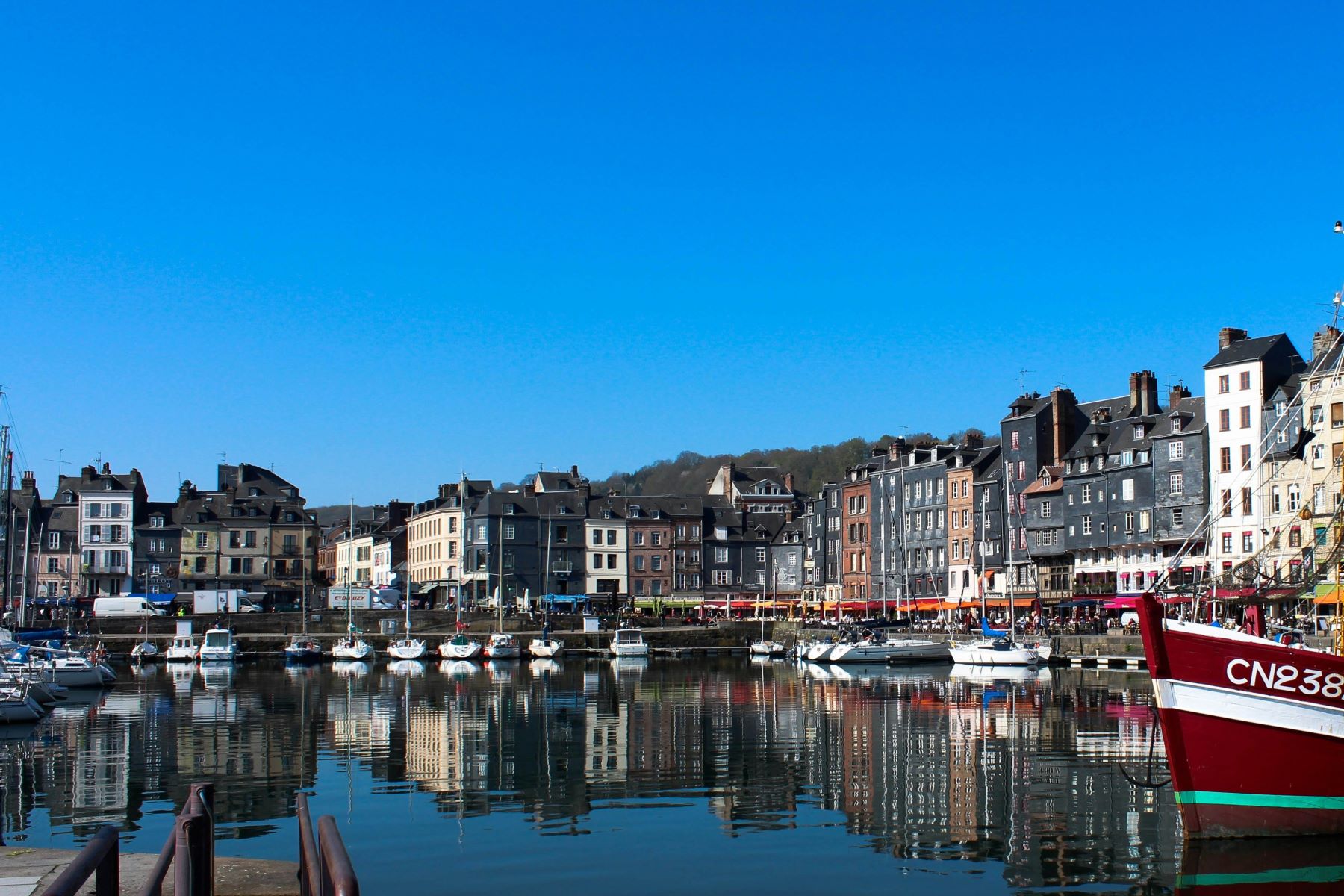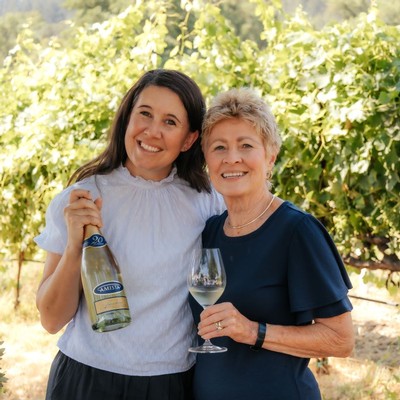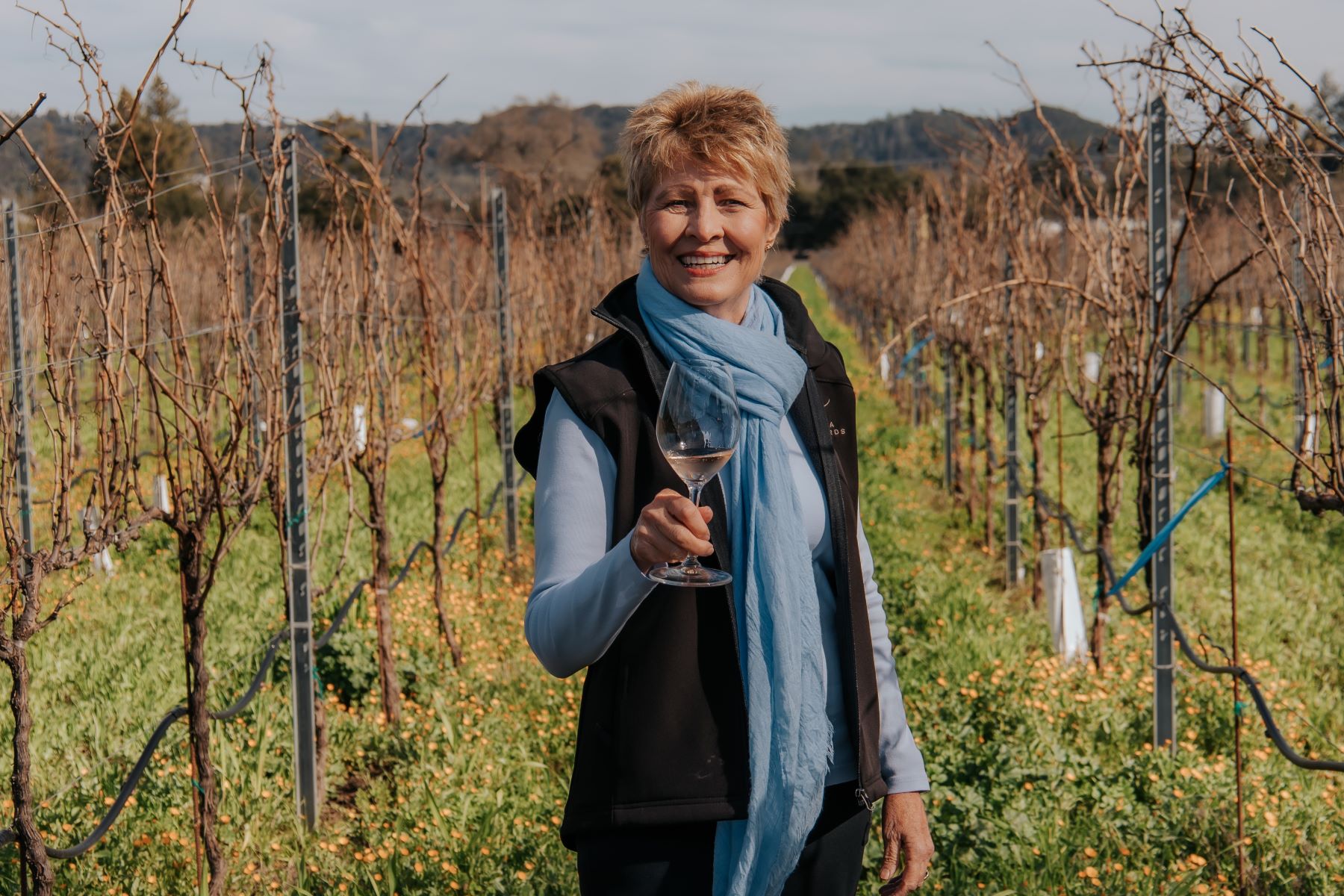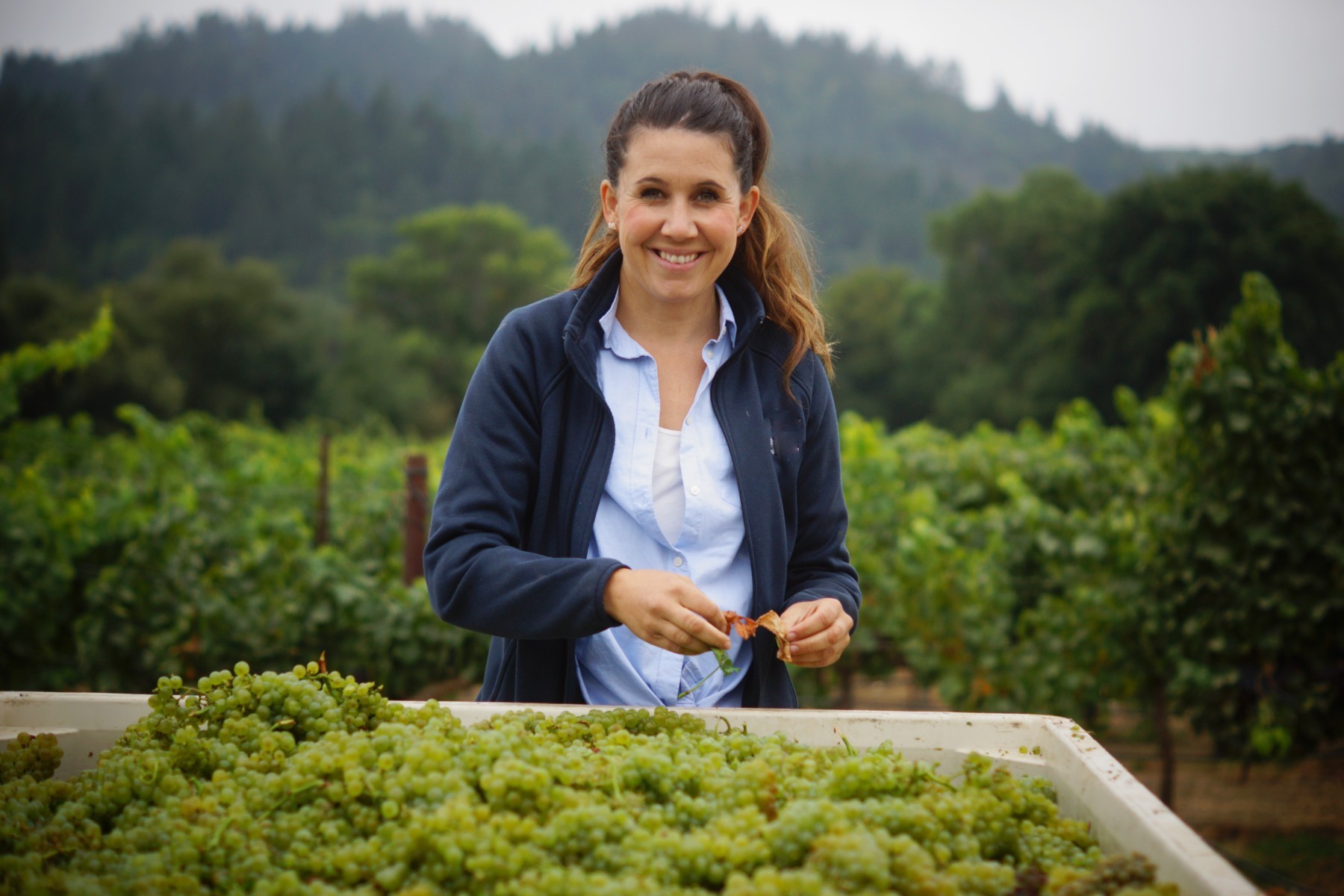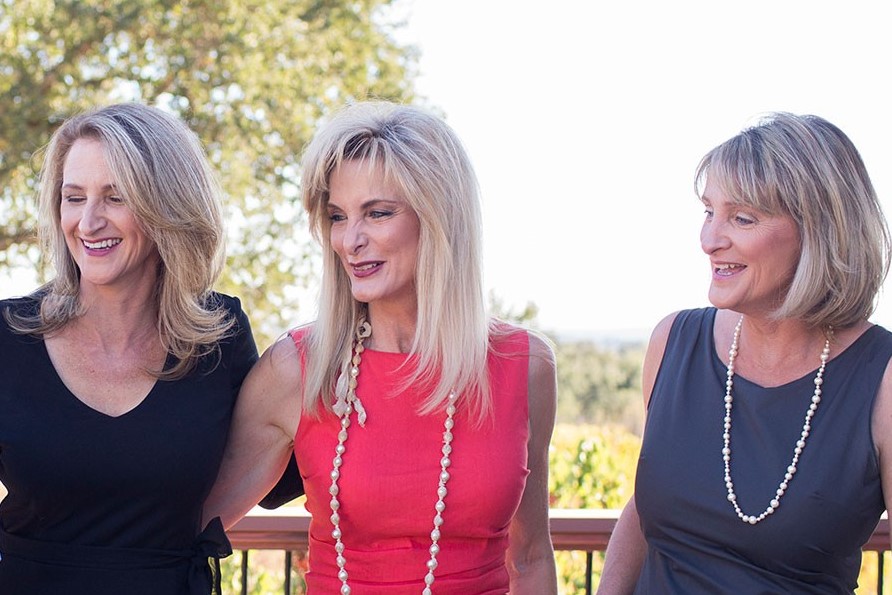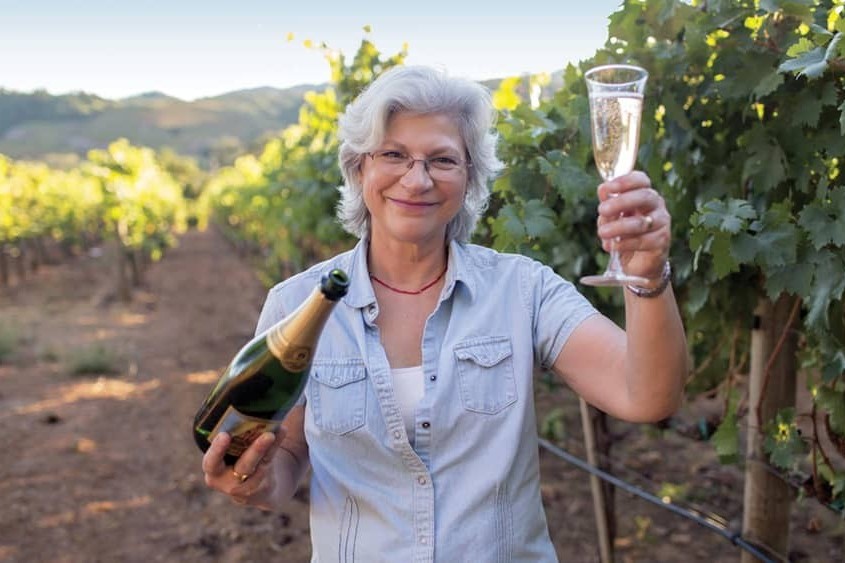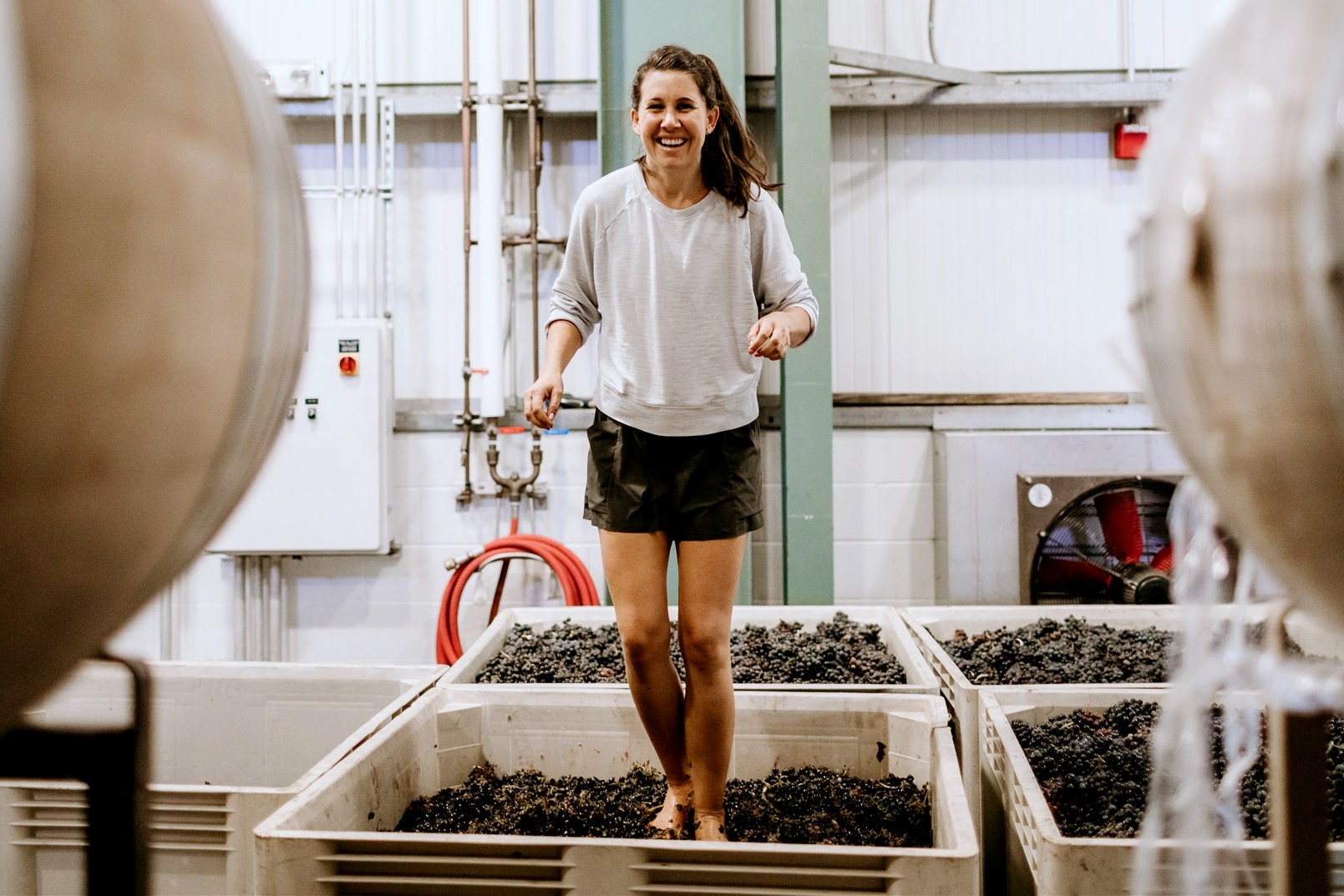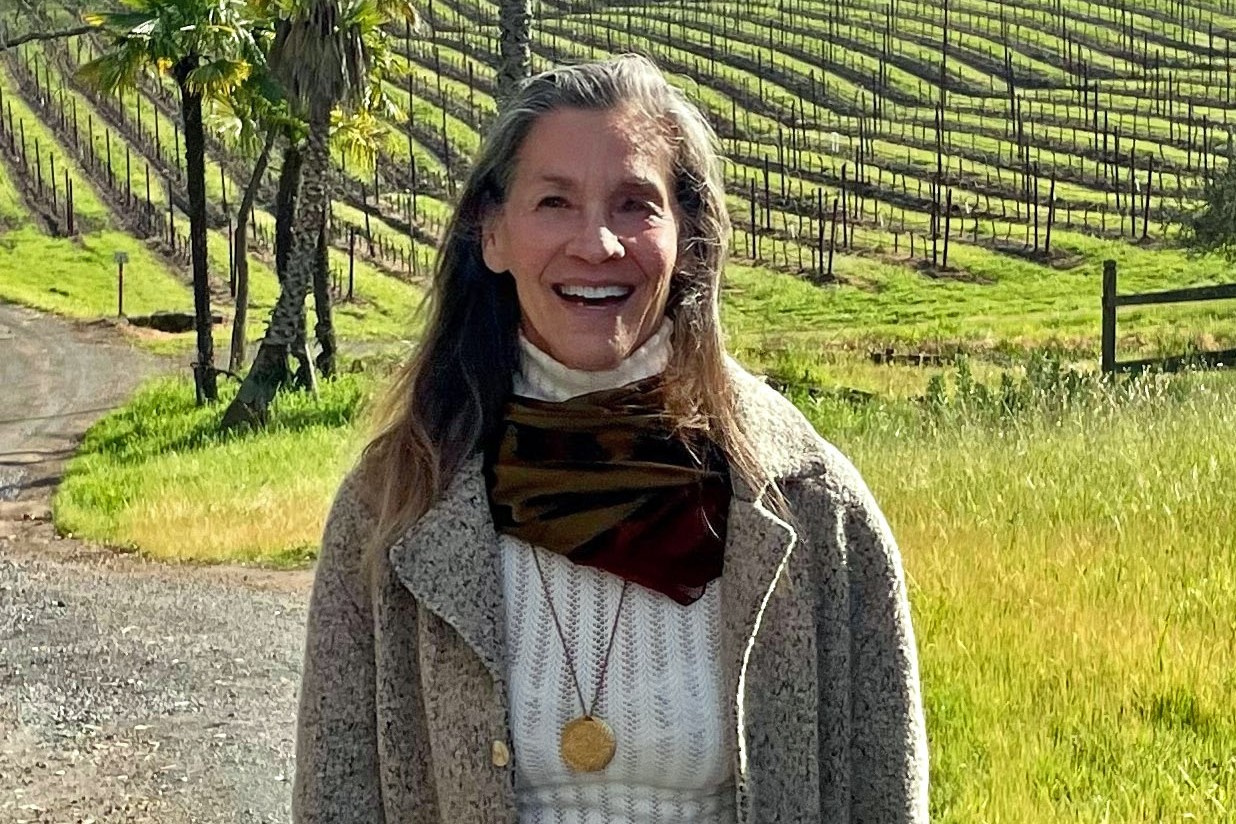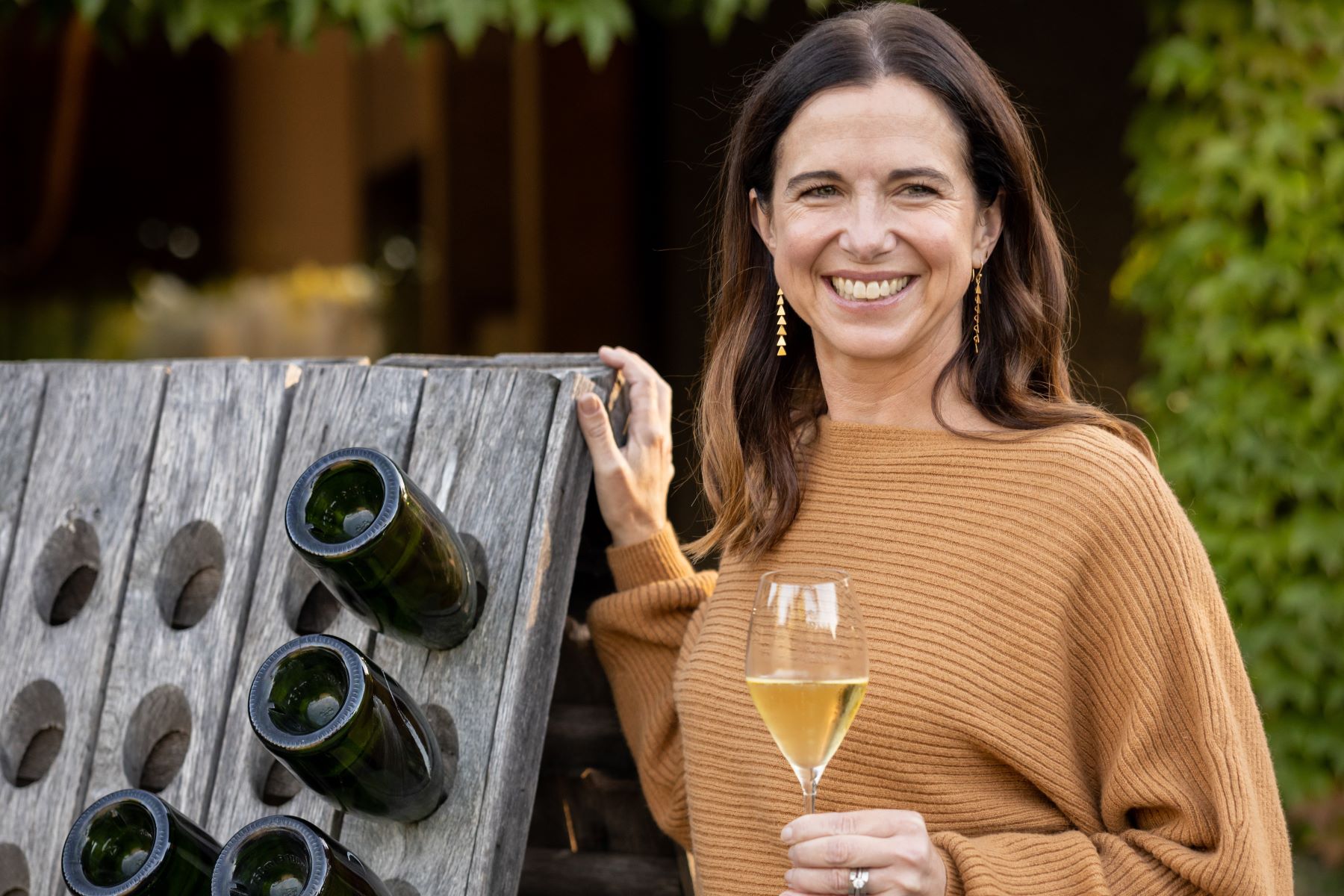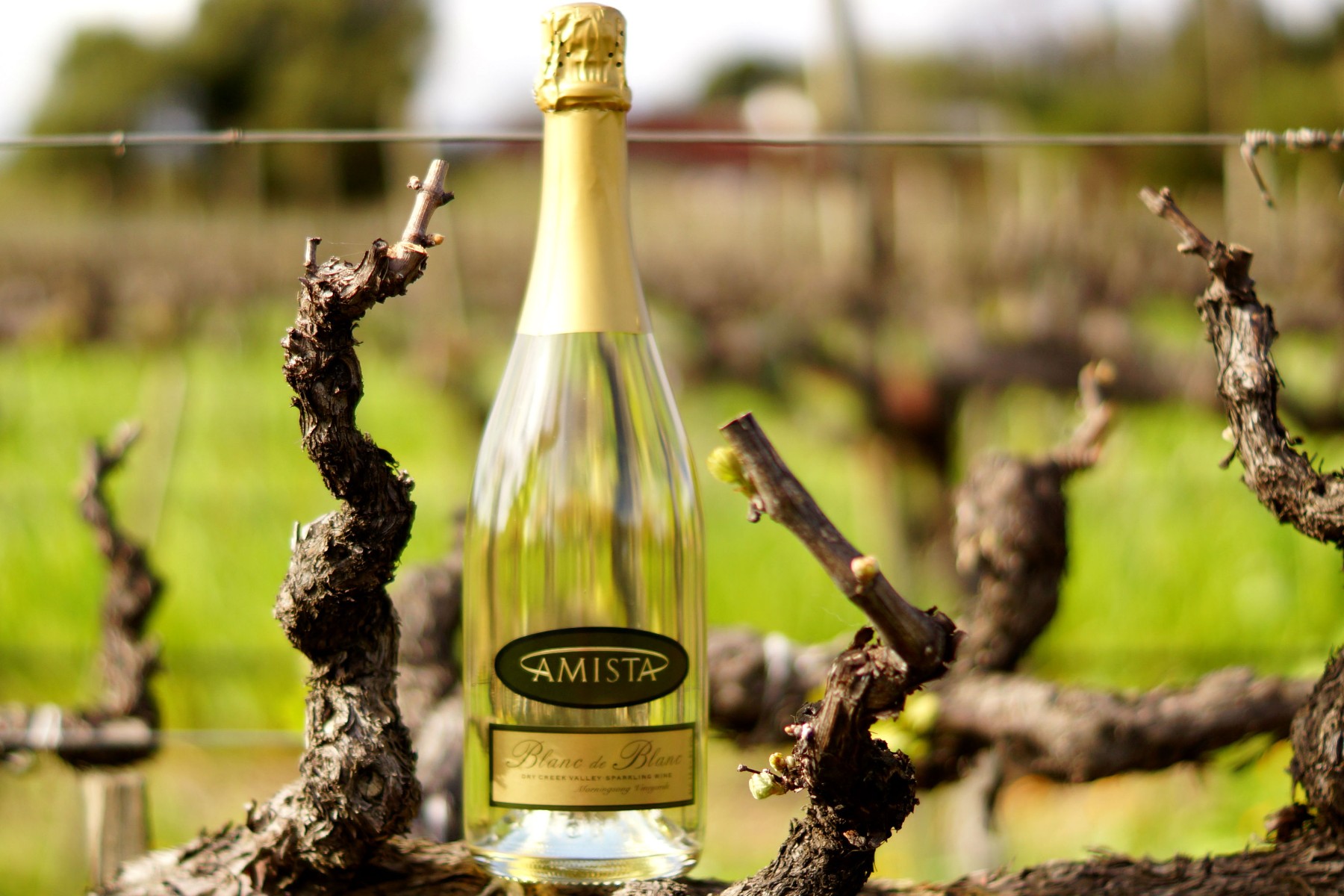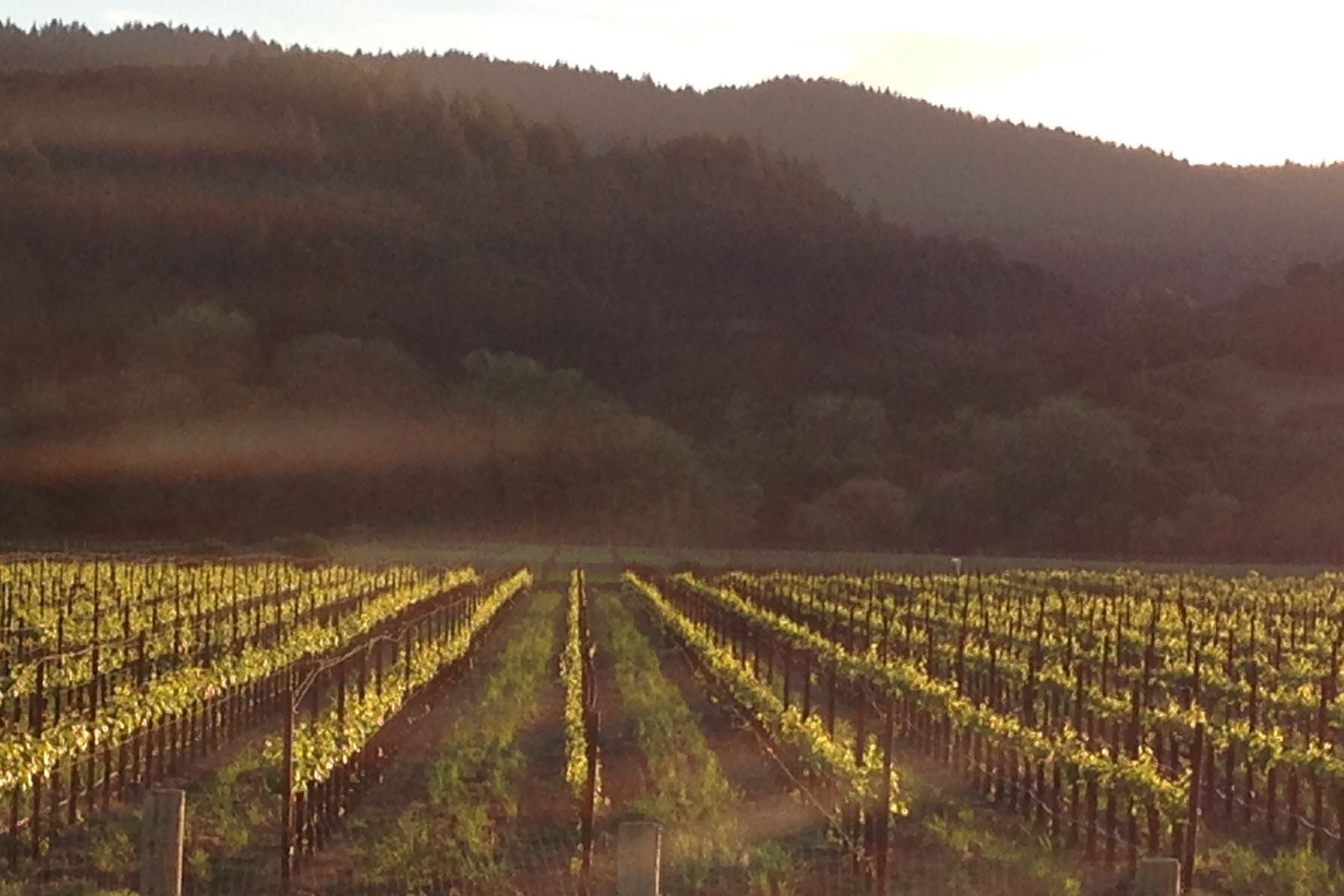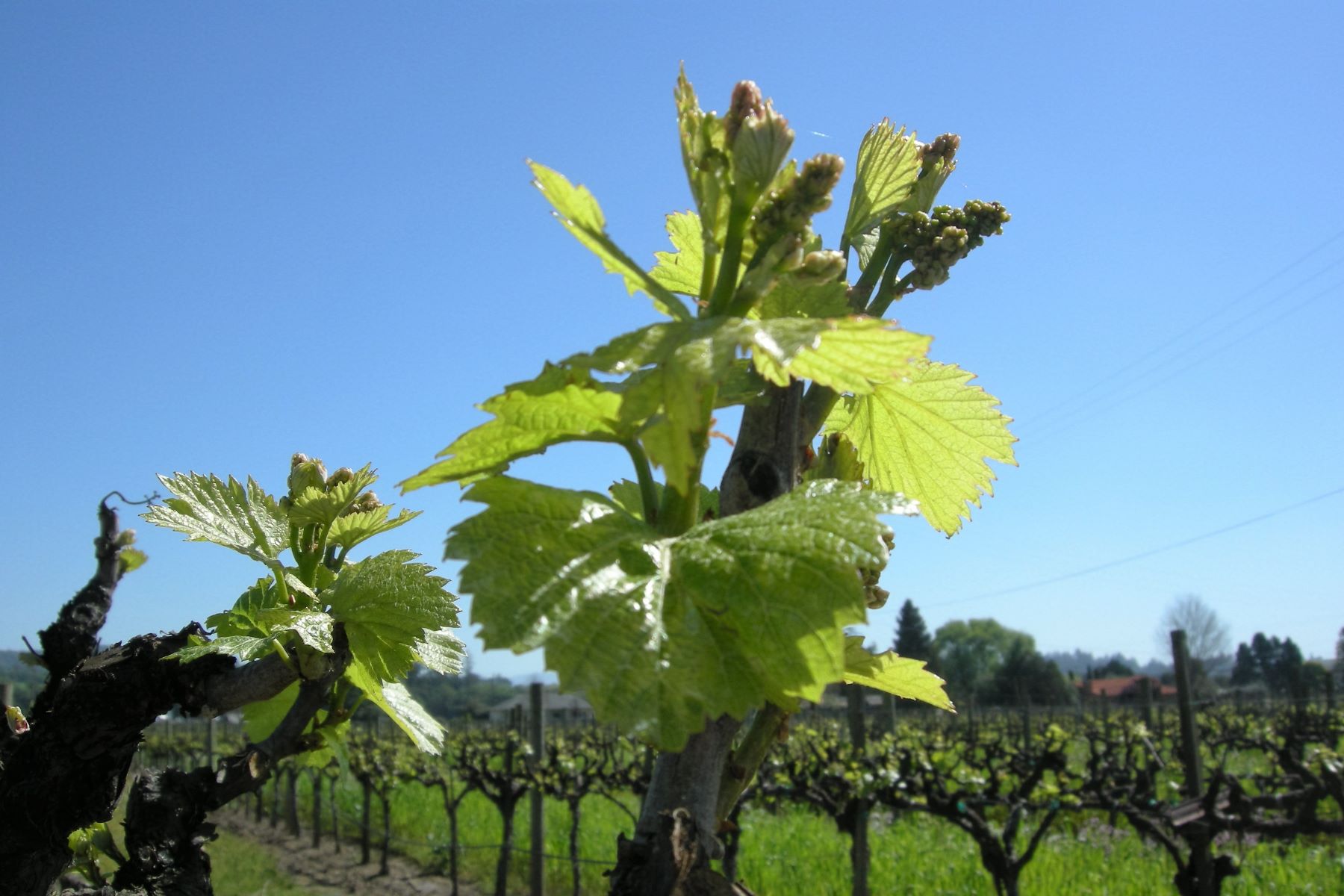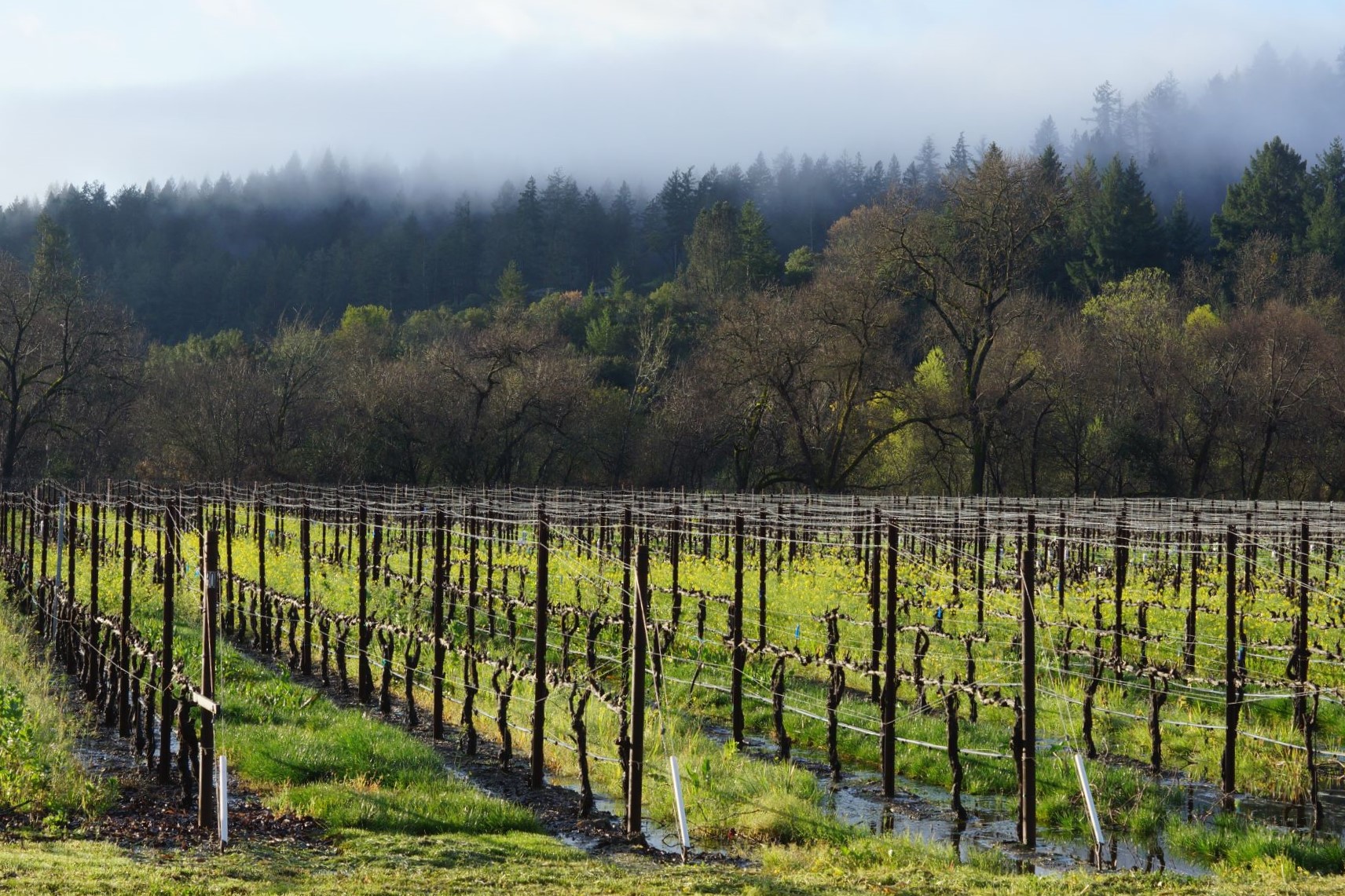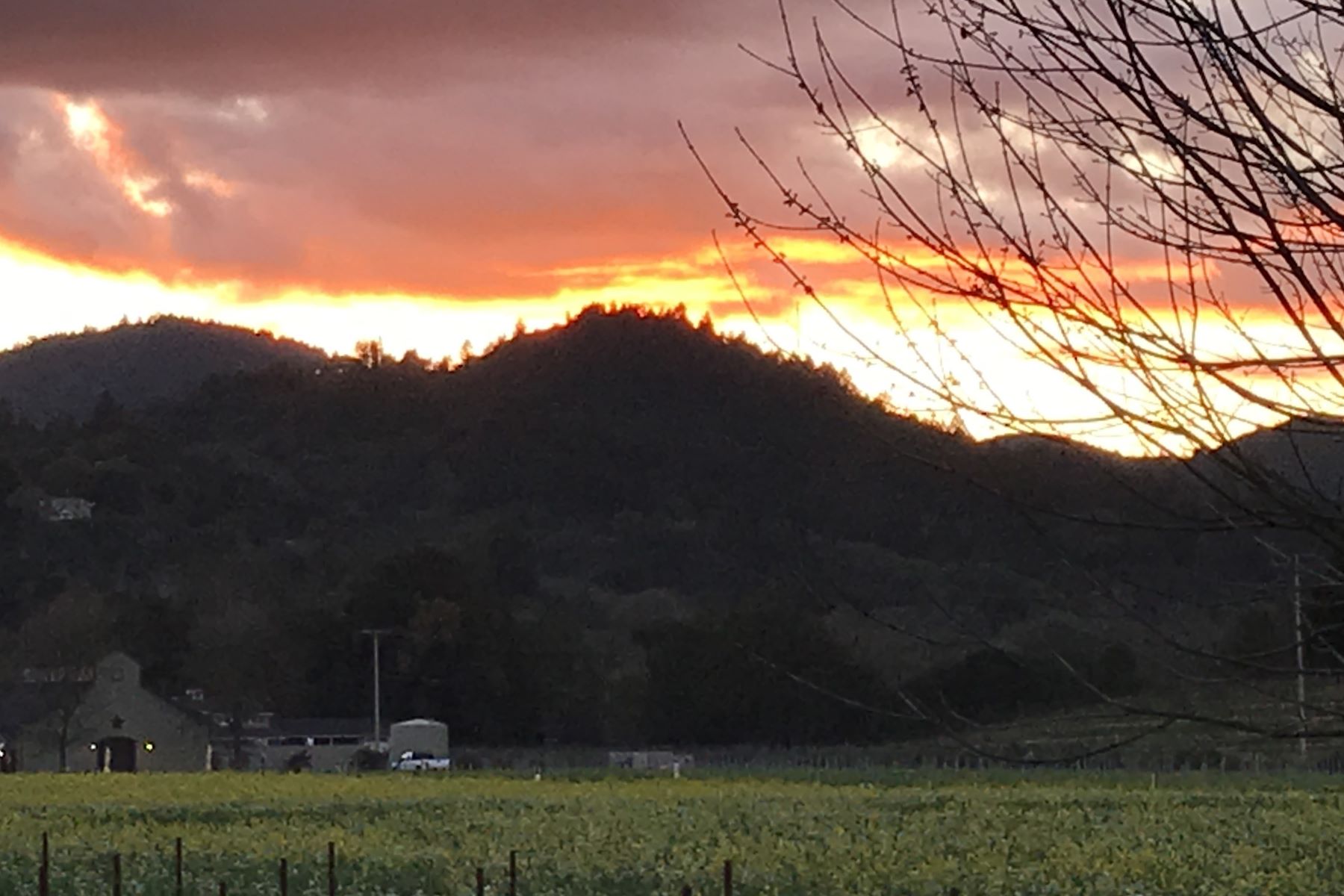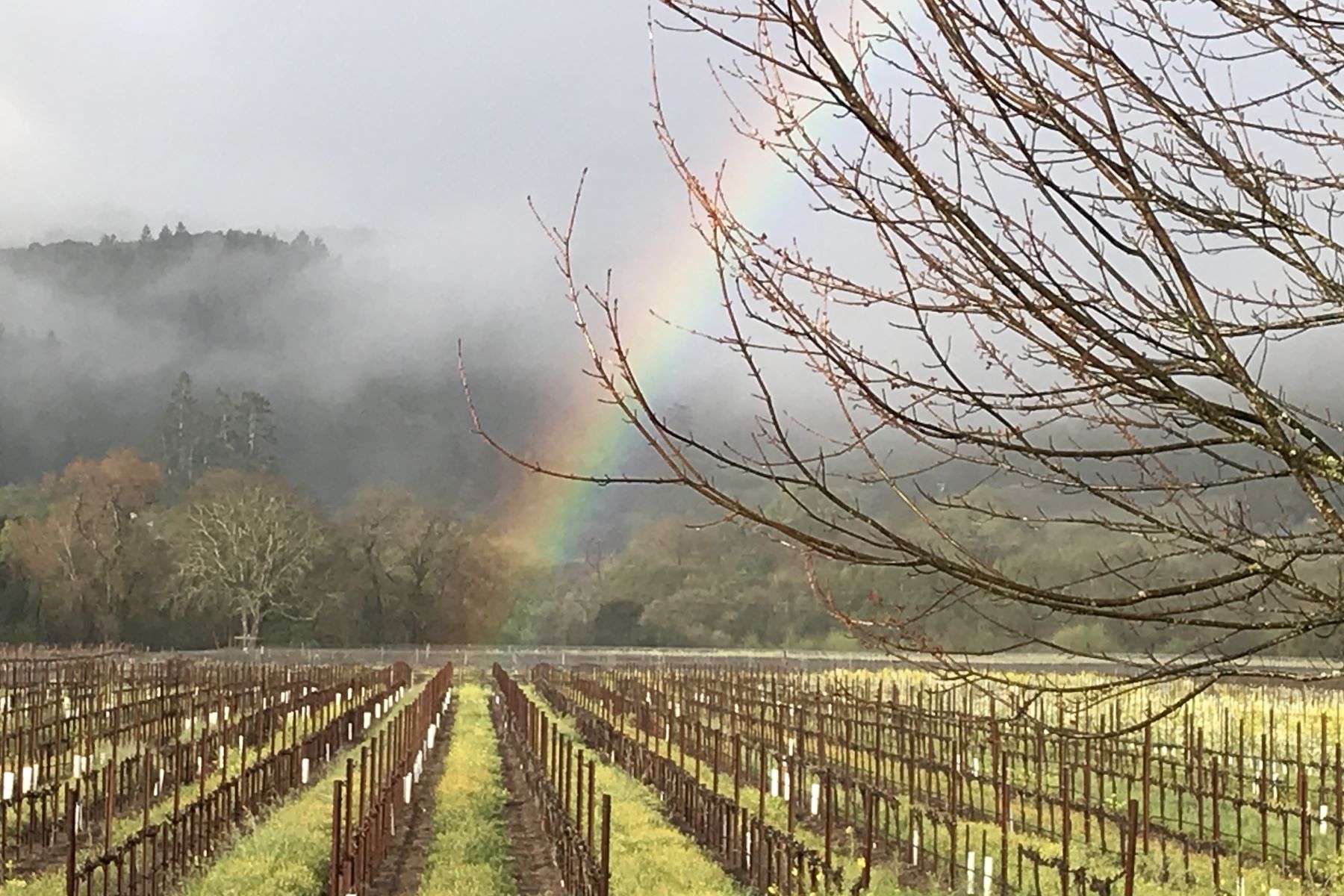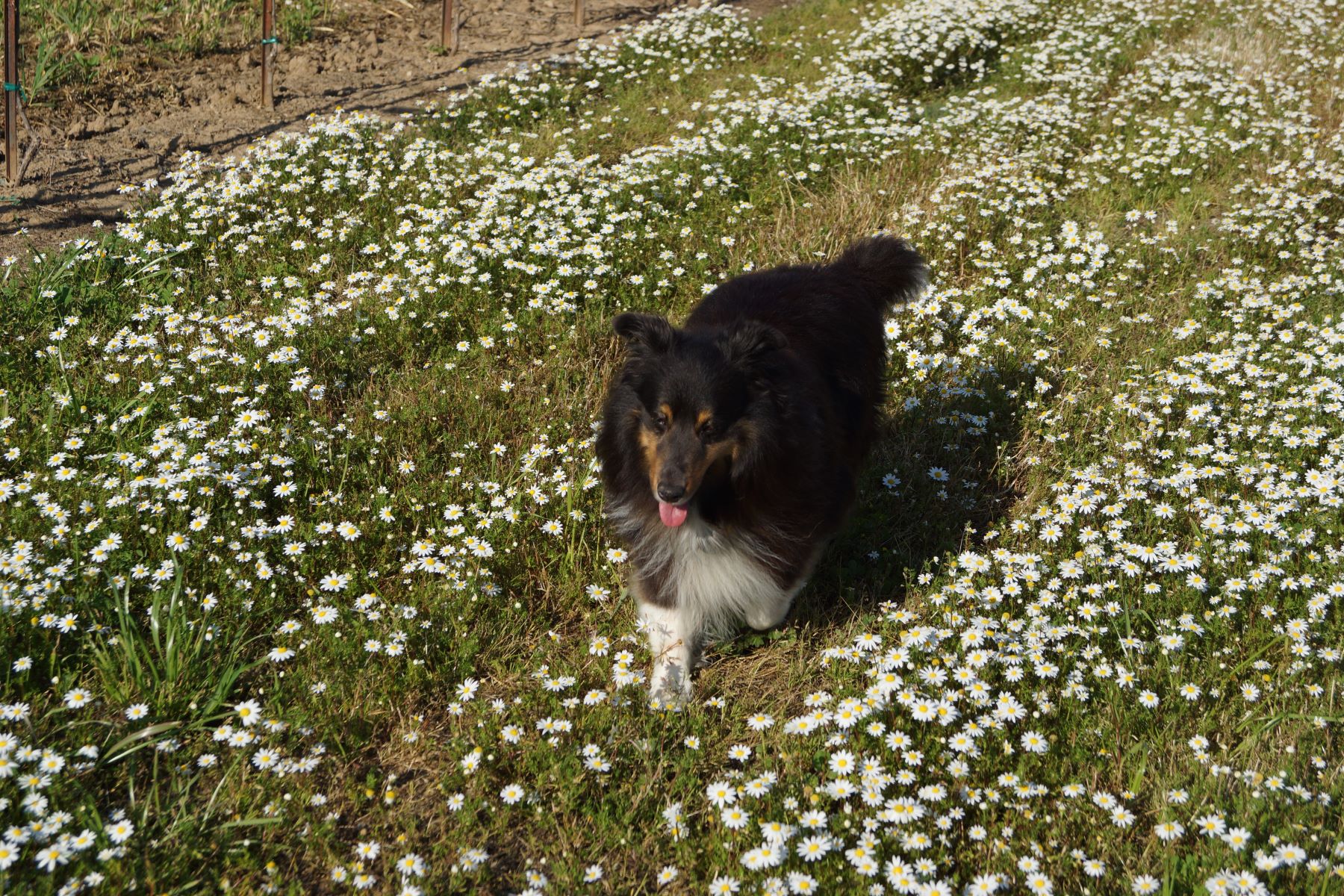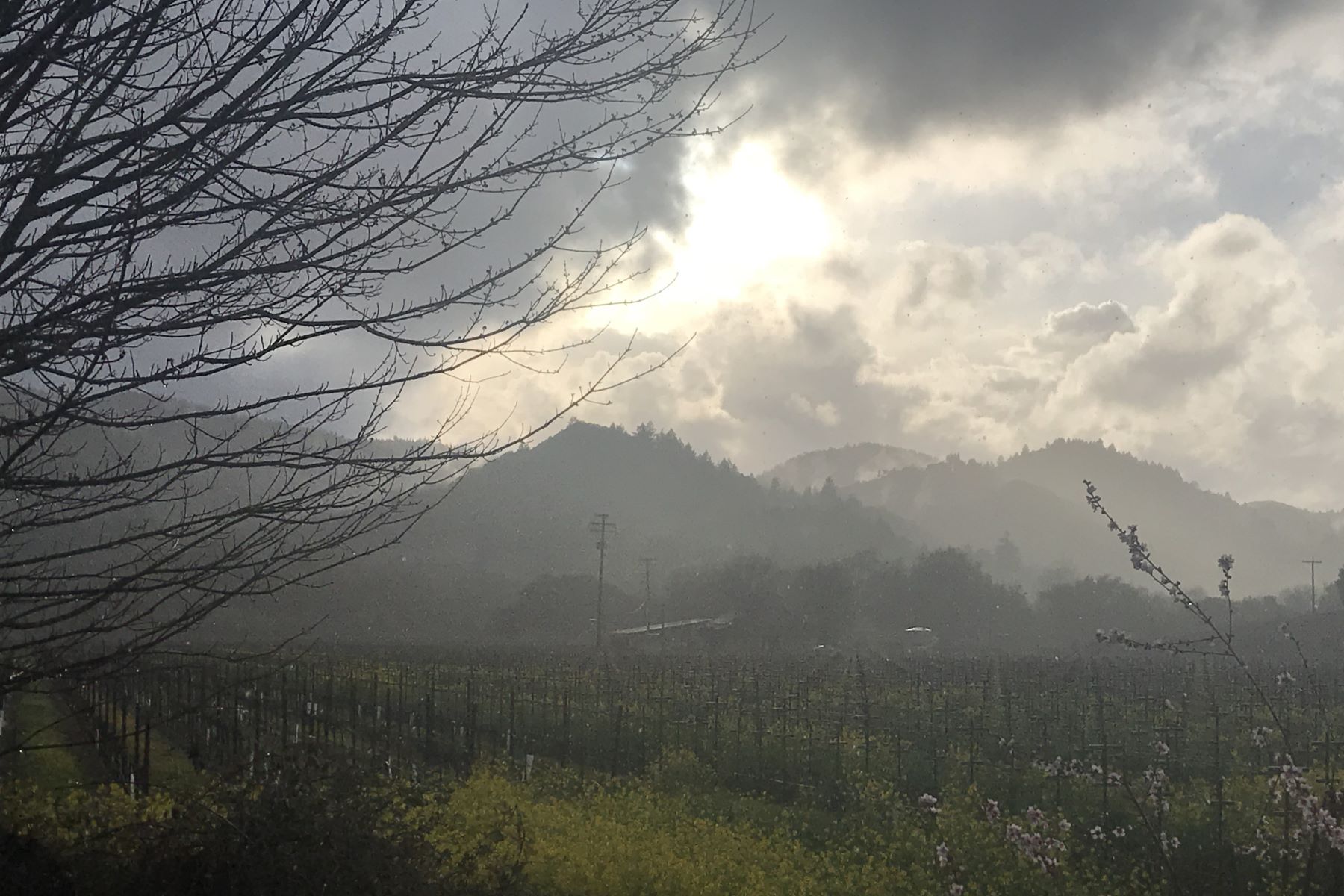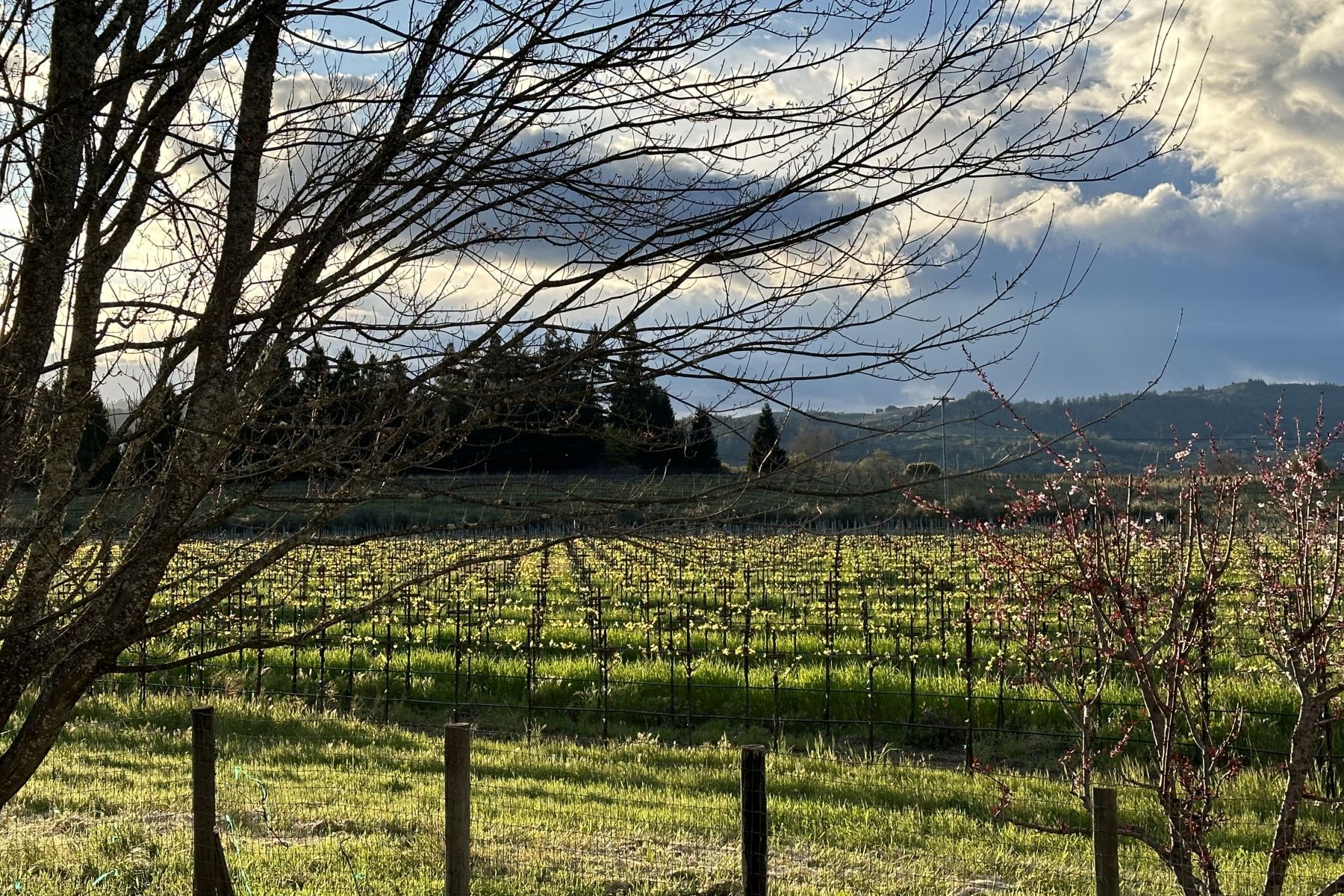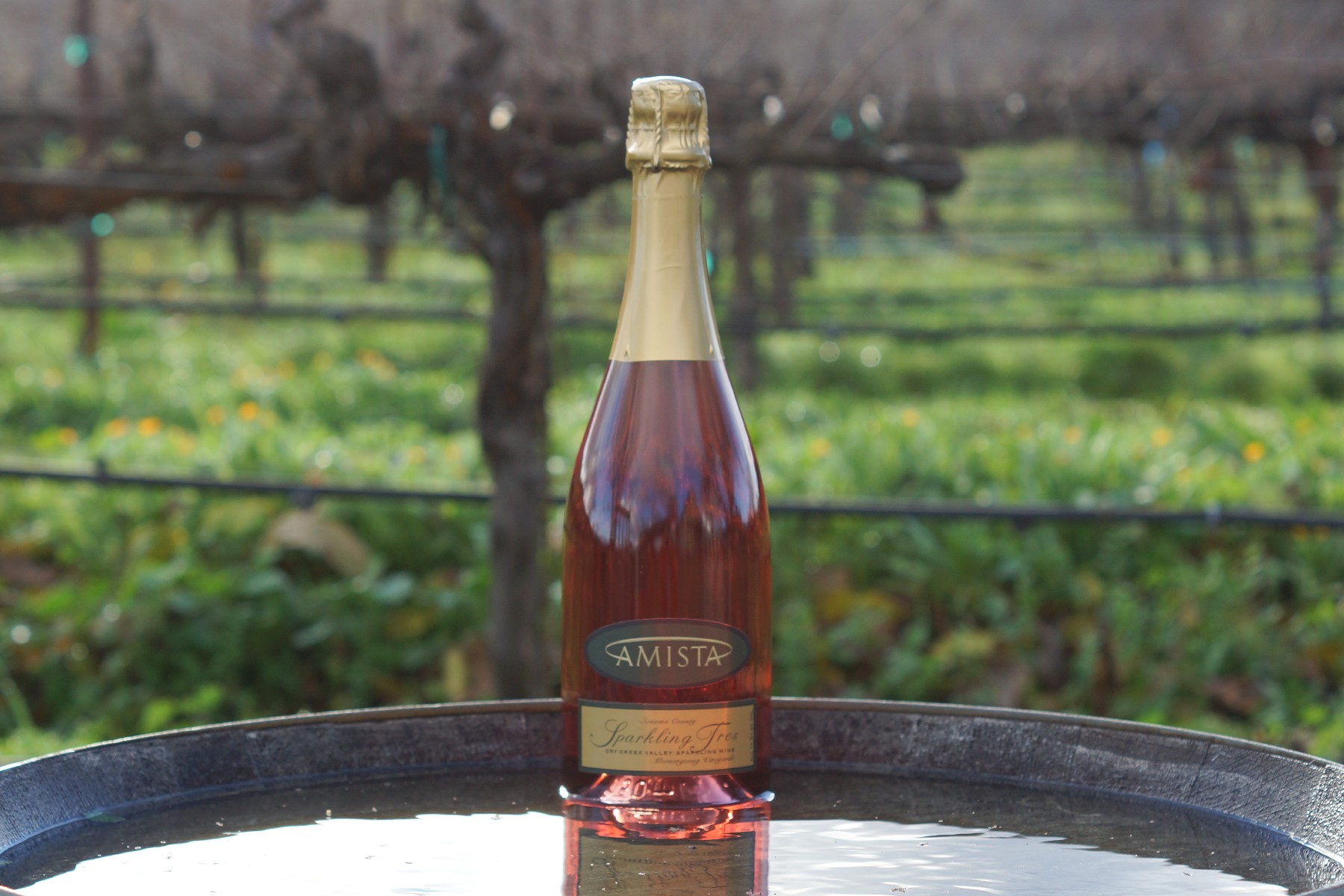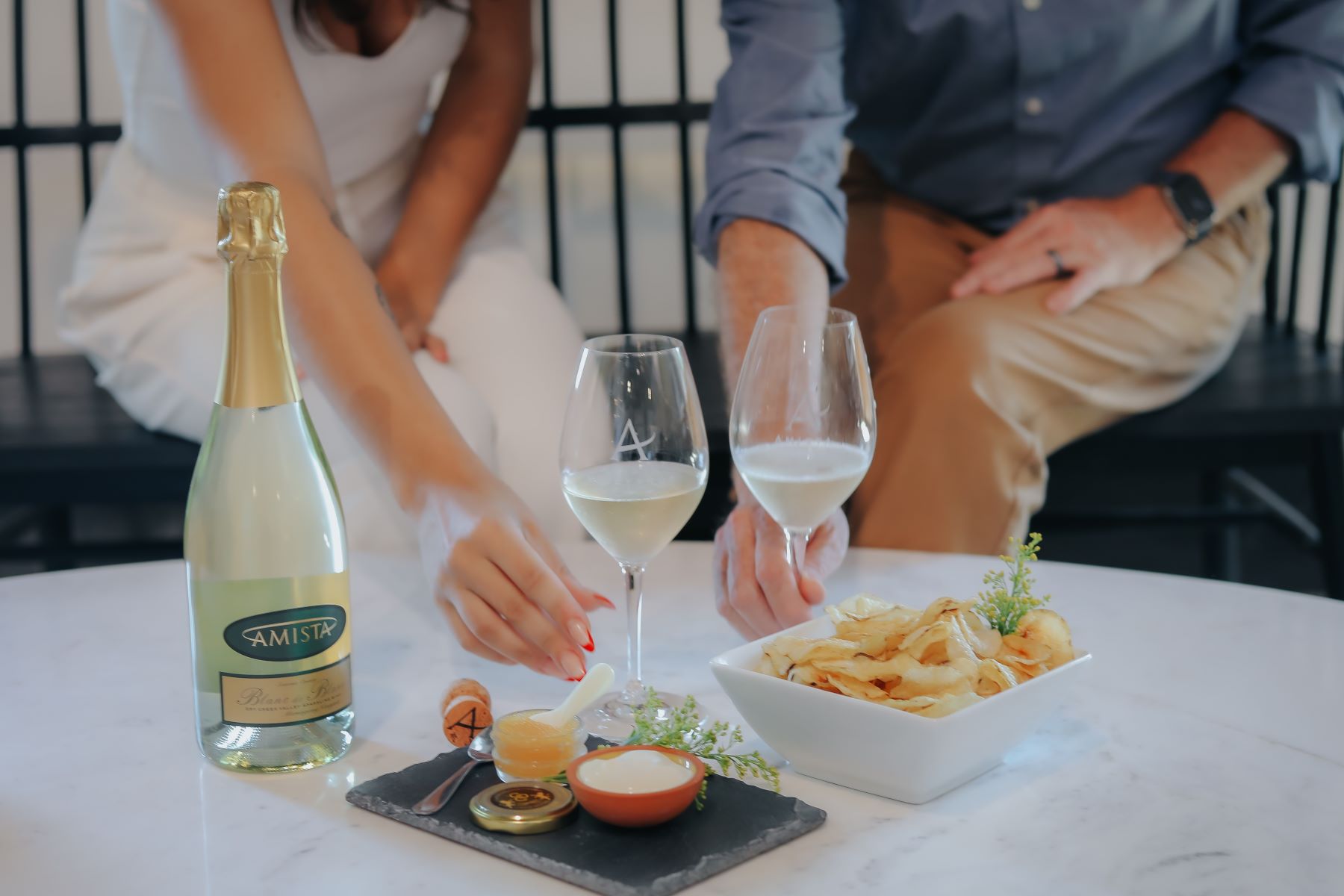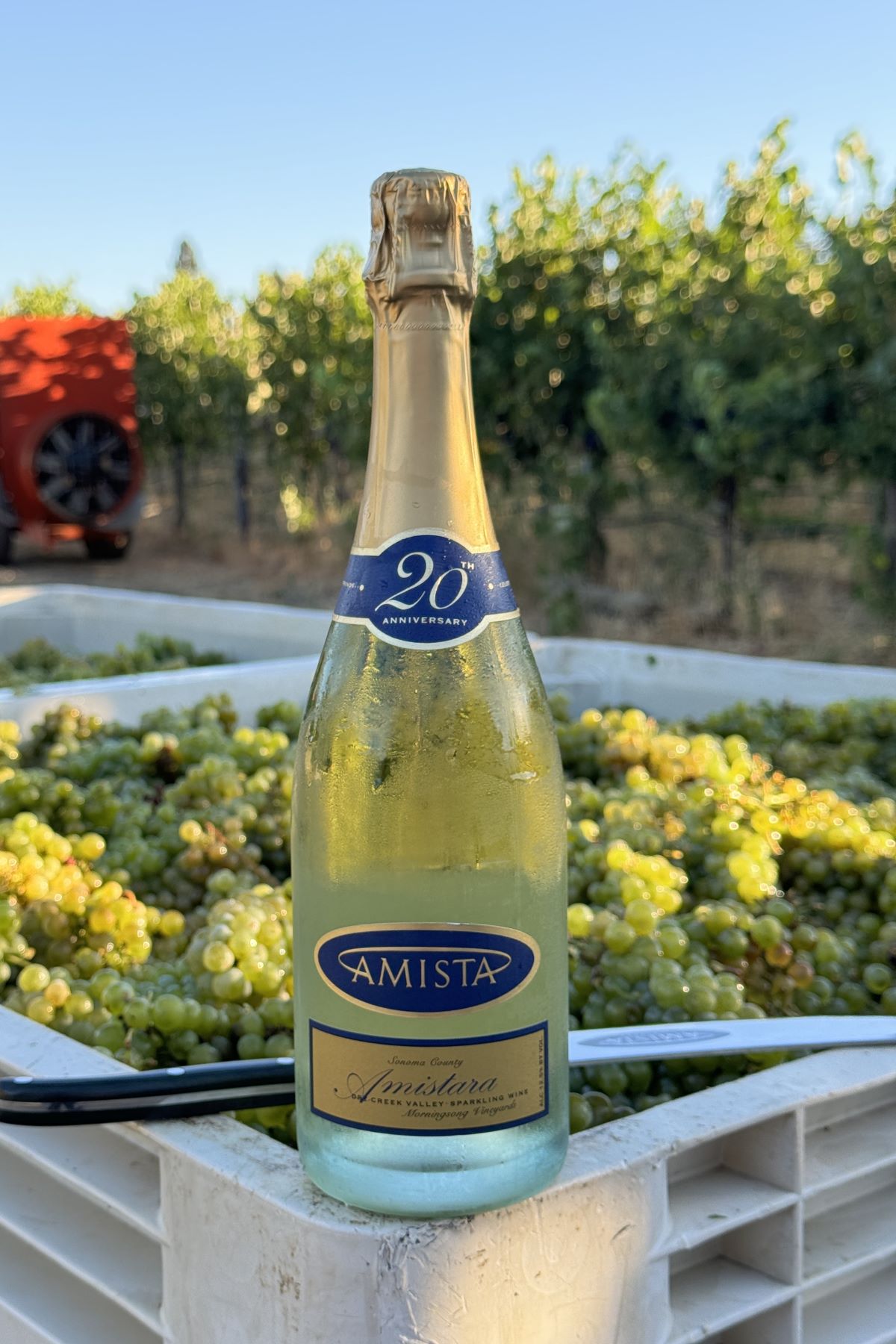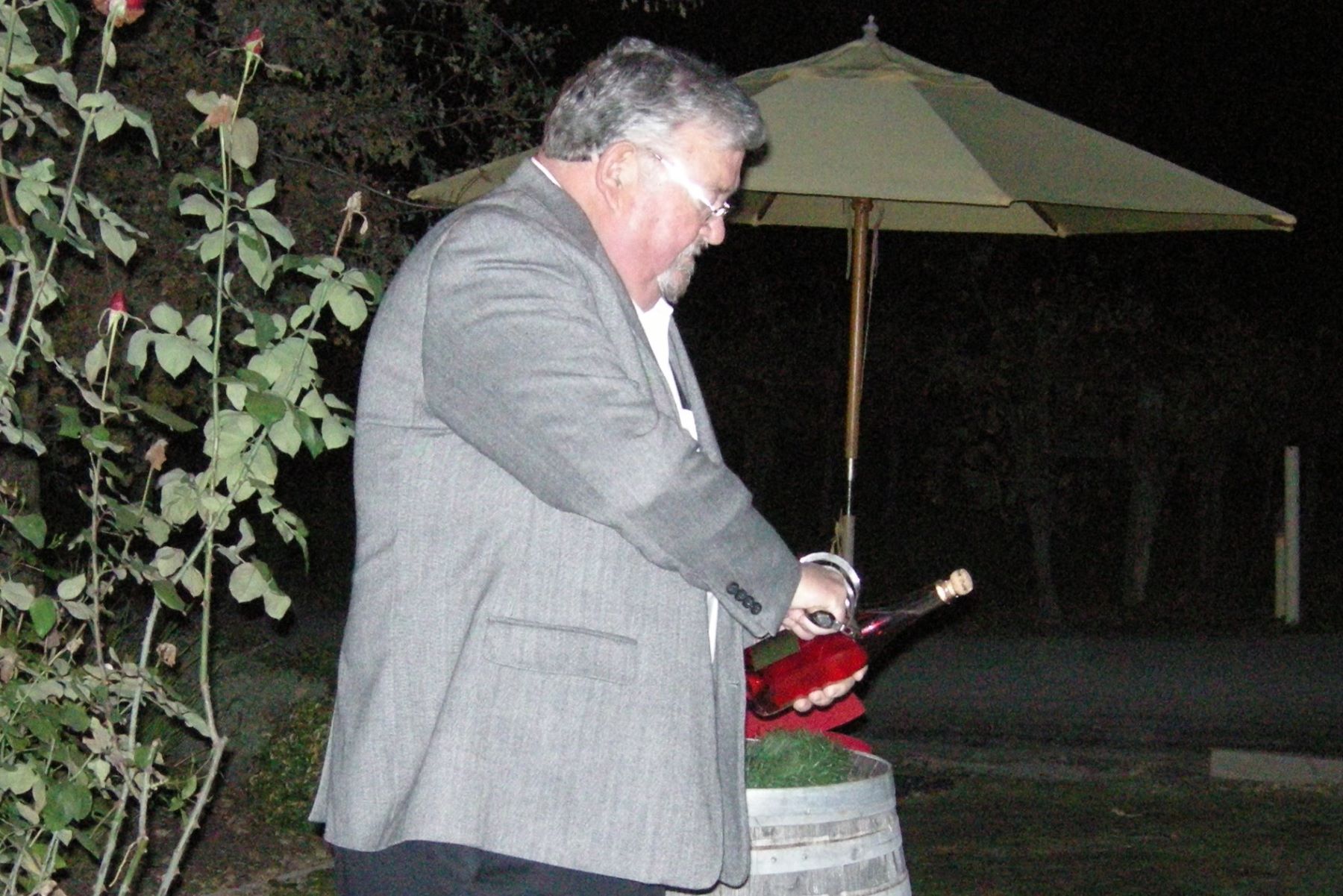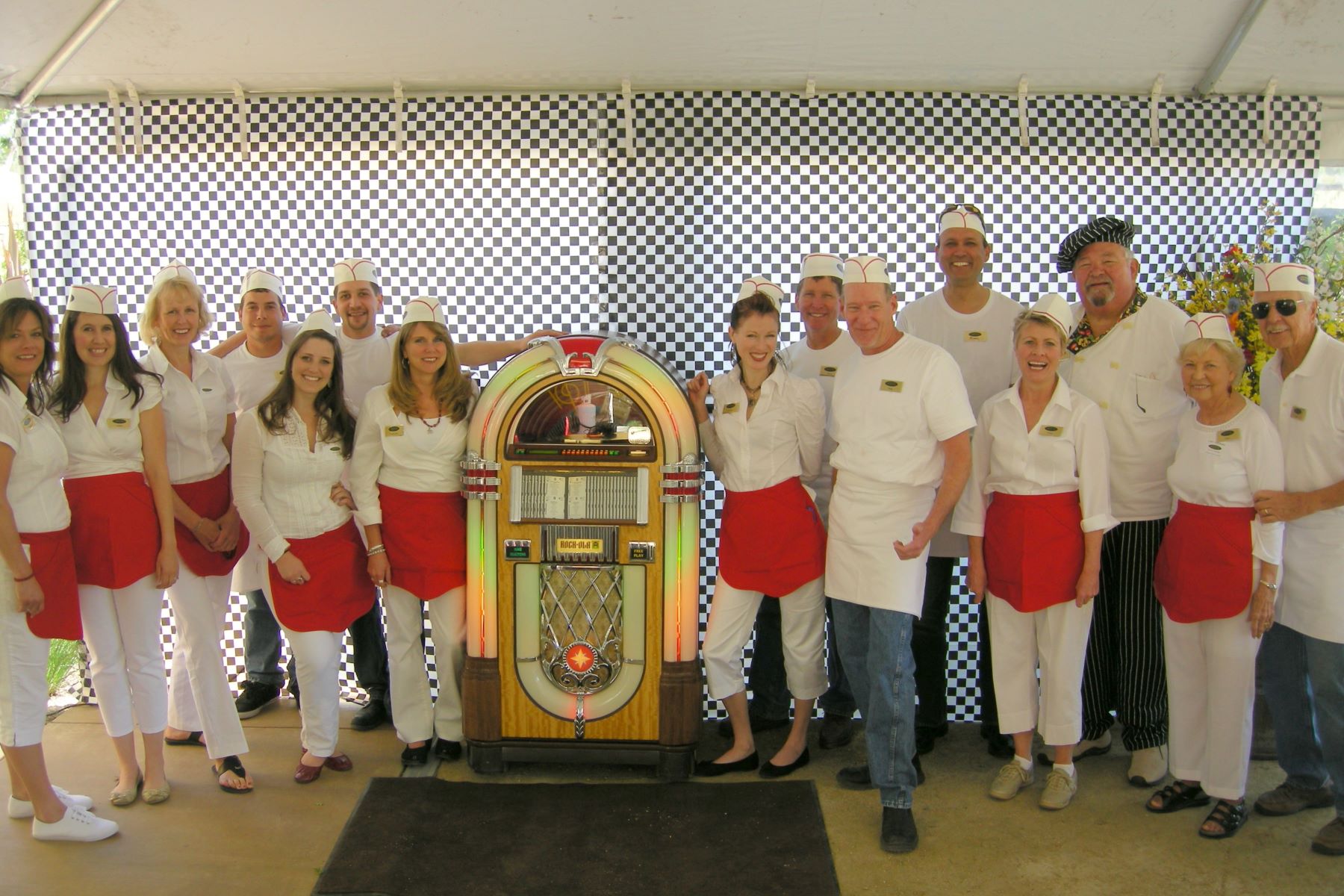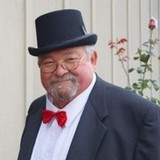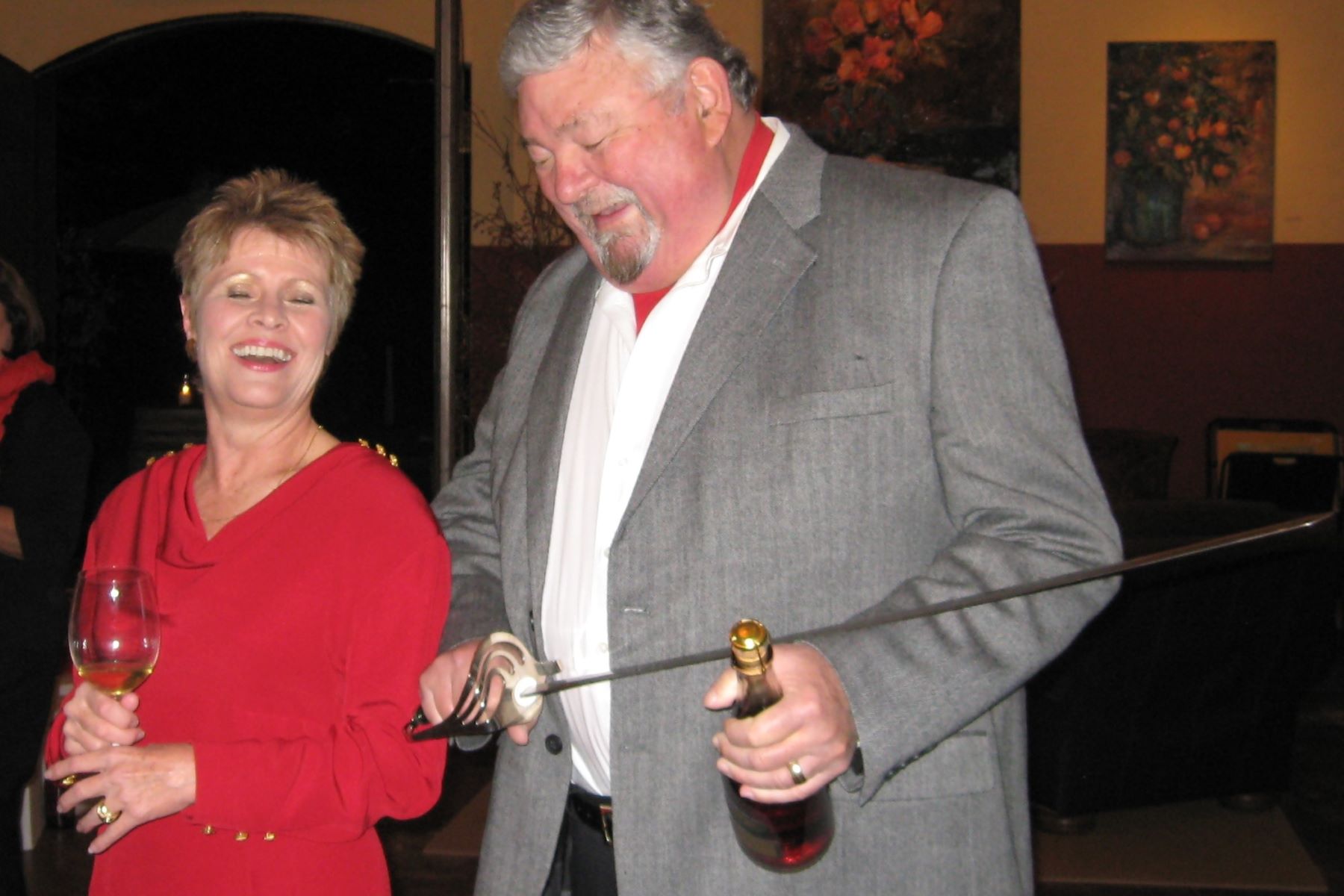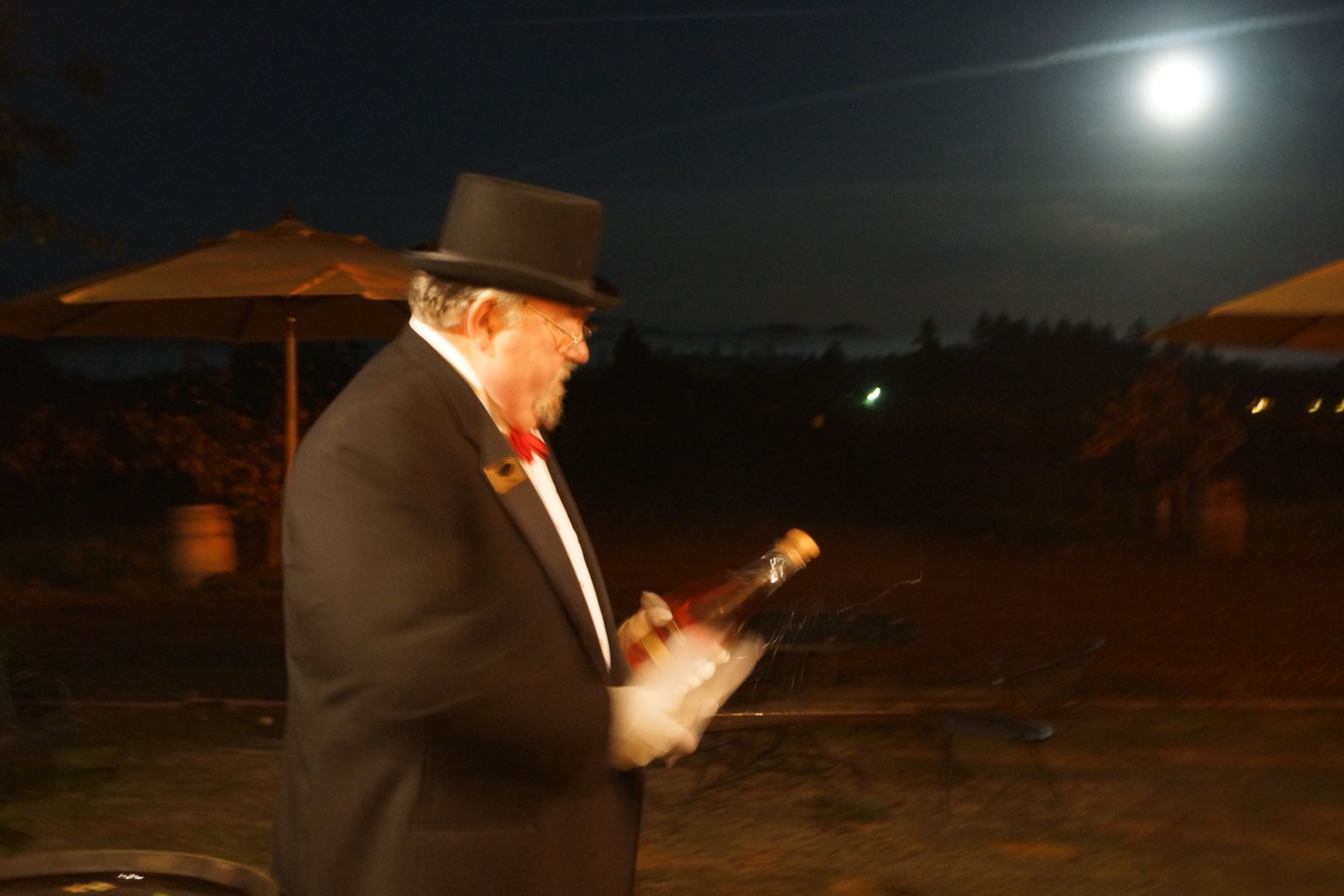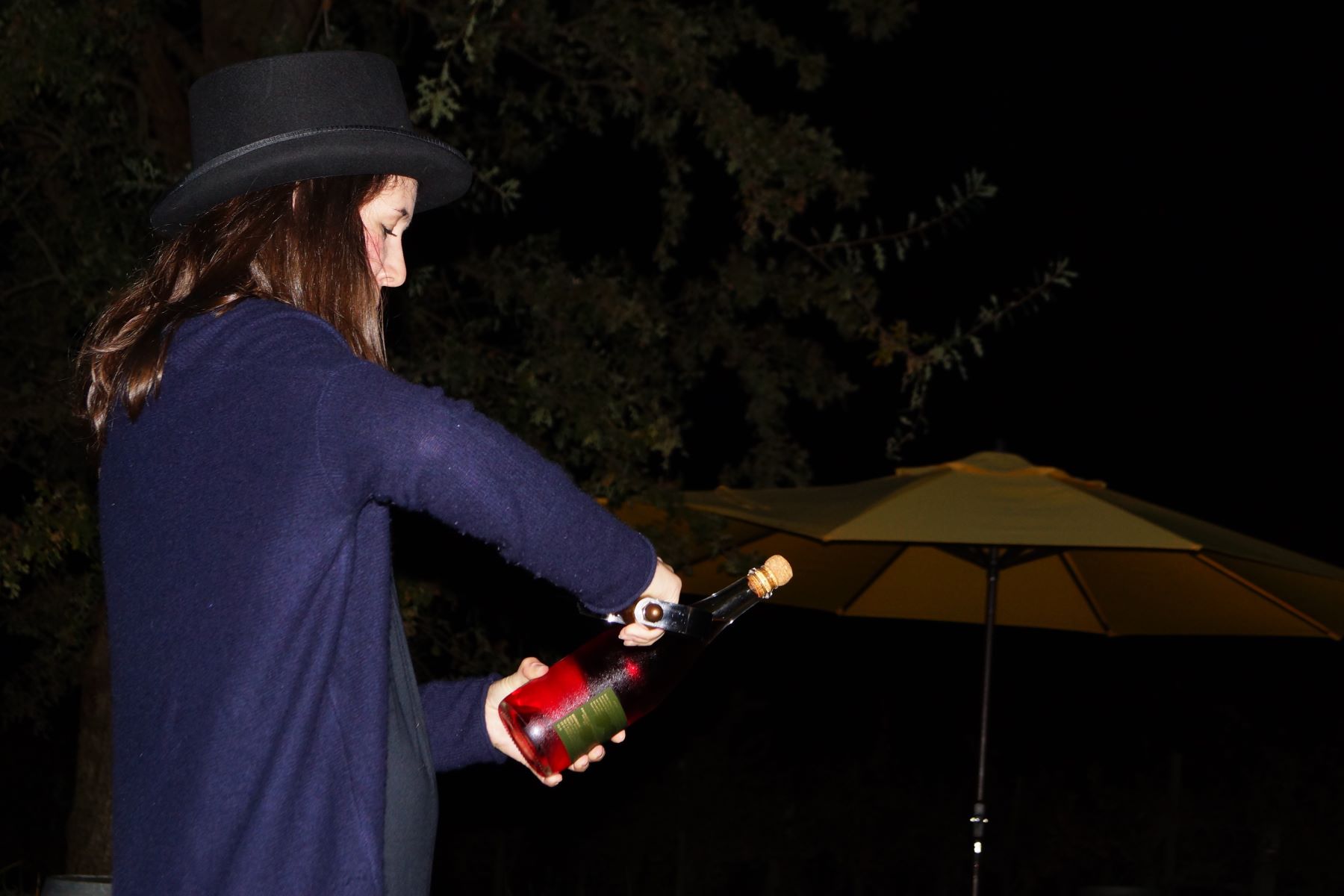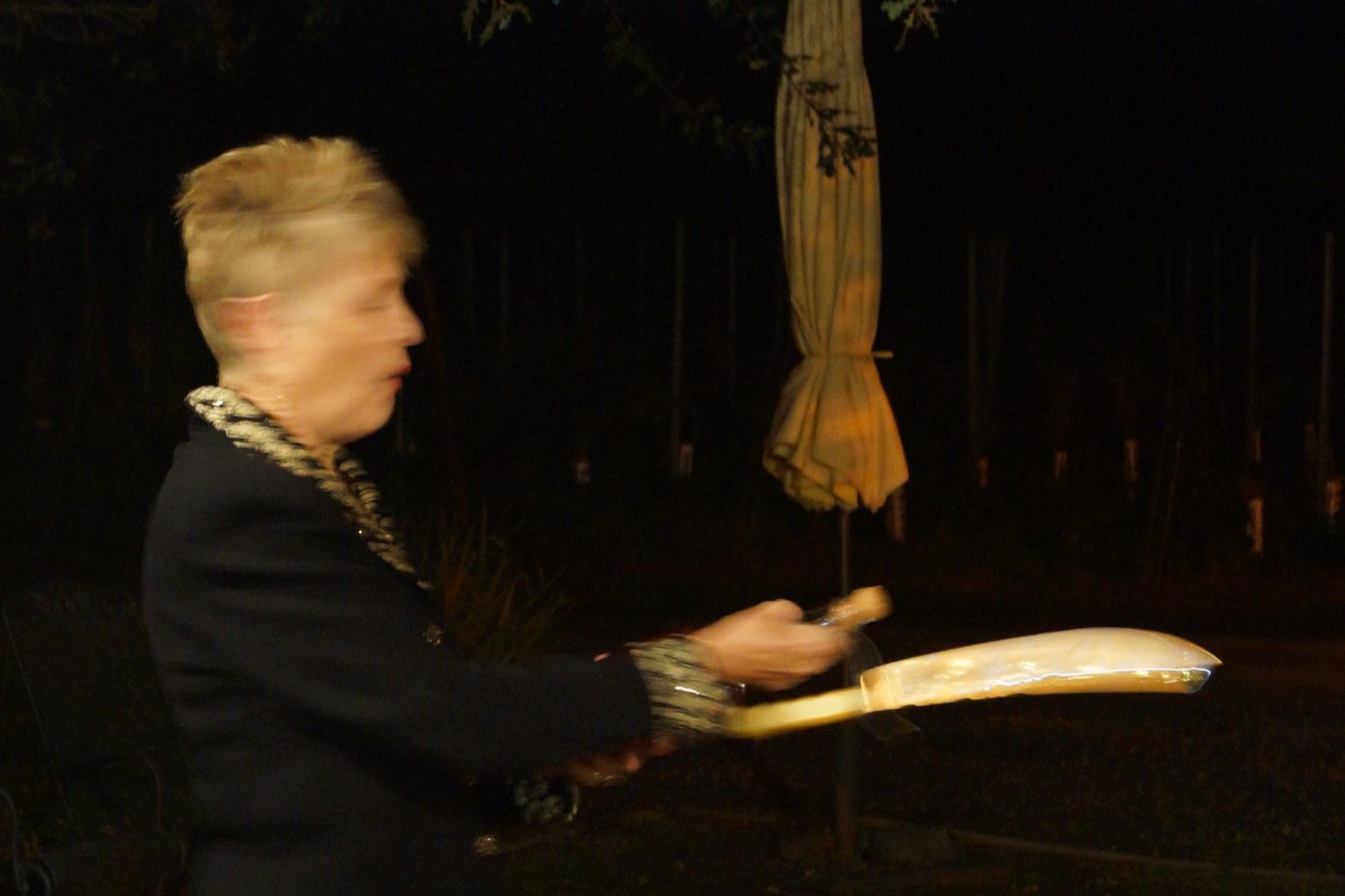Sparkling Moments at Amista Vineyards
Paris to Normandy with Amista and Our Dry Creek Valley Neighbors
A Wine Cruise Like No Other…
…connection, community and unforgettable moments.
I couldn’t be more excited about our upcoming wine cruise from Paris to Normandy in 2026. The thought of experiencing the romance of Paris, the breathtaking countryside along the Seine, and the rich history and art of Normandy is thrilling. But after co-hosting our first Danube wine cruise in 2017, I discovered that a river cruise is so much more than the destinations.
What Makes a River Cruise Special
A river cruise offers the perfect blend of exploration and ease. Here’s what I discovered:
- Unpack once, explore endlessly – Visit charming cities, quaint villages, and scenic countryside without the hassle of repacking every day.
- Curated experiences – Choose from several options for expert-led excursions that highlight the region’s natural beauty, culinary specialties, and fascinating history.
- No planning required – Everything is taken care of, from excursions to dining, so you can fully relax and enjoy.
- Exceptional food & wine – Savor delicious meals prepared by an onboard chef, perfectly paired with the amazing wines of Dry Creek Valley.
What Makes a Wine Cruise Extraordinary
But what truly sets a cruise apart is the people. The friendships formed and the connections deepened while sharing the adventure make it an experience you’ll cherish forever. Being surrounded by fellow wine lovers, who share a love of Dry Creek Valley creates a bond that transforms a simple trip into a once-in-a-lifetime journey. Whether it’s engaging conversations over dinner, laughter-filled excursions, or simply enjoying a glass of wine together on deck, it’s the shared moments that make a voyage unforgettable.
It’s a Shared Experience
Imagine boarding the ship with fellow wine lovers who have traveled Dry Creek Valley’s one road, stopped at its two stop signs and gazed across the acres of vines to the tree-studded hills beyond. They’ve likely crossed its historic Lambert Bridge, and sipped wines from its boutique wineries—just like you. We may arrive as strangers, but we’ll already have so much in common.
Dr. Liz Thach, MW, described Dry Creek Valley in Forbes:
"Another strong appeal of Dry Creek is that it is only 16 miles long, 2 miles wide and has no stoplights. Driving through the valley is spectacular anytime of the year, with the vineyards spread out in a verdant green tapestry in the summer; covered with gold and red leaves in autumn; and filled with old vines that look like sculptures in the winter. Springtime fills the vineyard rows with yellow mustard and orange California poppies."
There’s something incredibly special about being thousands of miles from home yet surrounded by people who share a deep appreciation for Dry Creek Valley.
It’s Personal
One of the greatest joys of our Danube cruise was the opportunity for genuine, unhurried conversations. Guests told me how much they appreciated having time to connect over meals, excursions, and informal gatherings. They especially loved the rare chance to chat casually with vintners and winemakers, learning firsthand about the wines they were enjoying at dinner.
I felt the same way. It was wonderful to move beyond the quick conversations of a tasting room visit or a wine event and truly get to know the people who love our wines. The first evening, I found a group of long-time Amista wine club members from Pittsburgh gathering in a cozy dining room. Over the week, we bonded over shared experiences, great wines, and lively conversations.
It’s Community
The shared interests and time for personal connection emerged into a strong sense of community, creating lasting bonds between club members from different wineries, vintners, and winemakers.
And those connections extended beyond our guests. One of the unexpected joys of co-hosting was spending time with my Dry Creek Valley neighbors. Though we work just minutes apart and see each other at events, we rarely get to sit down and truly connect.
One of my fond memories was watching two of my fellow winery owners hit the dance floor in the lounge every night—who knew they had such great moves? Moments like these create a sense of camaraderie that lasts long after the cruise ends.
Looking Ahead: Paris to Normandy 2026
As we prepare for our Paris to Normandy wine cruise, our sense of community is already growing. Ashley and I met with our winery partners recently at Amista, gathering on the patio with bubbles and snacks, brainstorming ideas for wine dinners and master classes. We are already enjoying the chance to collaborate to ensure the 2026 cruise will be an extraordinary experience for everyone on board.
Check out a quick video message from Ashley and me
Join us for a once-in-a-lifetime journey, where you’ll experience the beauty of France, the elegance of Dry Creek Valley wines, and the magic of shared adventures. We can’t wait to create unforgettable memories with you!
Ready to Set Sail?
Interested in joining us on this exclusive wine cruise from Paris to Normandy? Be sure to reserve your spot early!
Get the details: Wine Cruise – Paris to Normandy, June 2026
The Sparkling Women of Sonoma
Saluting Women Owners and Winemakers of Today…
…and the pioneering Champagne women who paved the way.
You might be surprised to learn that Sonoma wine country is home to a dozen wineries with a special focus on sparkling wines, each crafting a collection of bubblies and offering dedicated sparkling wine tastings. Amista is proud to be among them!
In celebration of Women’s History Month, we're raising a glass to the remarkable women behind six of these sparkling houses—either as owners or winemakers. These talented women are shaping the future of sparkling wine in Sonoma, just as pioneering women did in Champagne centuries ago.
Amista Vineyards, Vicky Farrow, Owner
Amista Vineyards, Ashley Herzberg, Winemaker
Breathless Sparkling Wines, Sharon Cohn, Rebecca Faust & Cynthia Faust, Owners
Breathless Sparkling Wines, Penny Gadd-Coster, Winemaker
Cast Wines, Ashley Herzberg, Winemaker
Iron Horse Vineyards – Joy Sterling, Owner
J Vineyards & Winery – Nicole Hitchcock, Winemaker
Korbel Champagne Cellars – Erica Mandl, Winemaker
It’s inspiring to see these accomplished women leading the charge in Sonoma’s sparkling wine scene. Their passion, craftsmanship, and dedication remind me of the pioneering women who transformed Champagne and left an indelible mark on the world of sparkling wine.
Trailblazing Women of Champagne
Madame Clicquot (Barbe-Nicole Ponsardin). At just 27, she took over Veuve Clicquot after her husband's passing. She revolutionized Champagne by inventing the riddling table, creating the first vintage Champagne, and pioneering the first rosé by blending white and red wines.
Louise Pommery. In 1858 she took over Pommery following the death of her husband. She created Pommery Nature in 1874, introducing the world to brut Champagne, breaking the tradition of sweet Champagnes and transforming the style into the crisp, dry expression we love today.
Lily Bollinger. Following the death of her husband in 1941, she assumed the reins of Champagne Bollinger, leading the house for 30 years. She developed the “recently disgorged” method, allowing Champagne to age longer on the lees for a richer, more complex flavor.
If you’re as fascinated by these trailblazers as I am, I suggest the biography The Widow Clicquot: The Story of a Champagne Empire and the Woman Who Ruled It by Tilar Mazzeo.
Stories of the Champagne Widows
I am also enjoying the pleasure of collaborating on Sparkling Discoveries with novelist Rebecca Rosenberg, who has written a captivating historical fiction series on all three Champagne widows, bringing these extraordinary women to life.

- Champagne Widows: First Woman of Champagne, Veuve Clicquot
- Madame Pommery: Creator of Brut Champagne
- Look out for the third book in the series, featuring Lily Bollinger, coming later this year!
Here’s to the women—past and present—who make the world of sparkling wine shine!
Why France? The Inspiration Behind Our Amista Vineyards Wine Cruise
Explore, sip and celebrate…
…our Rhône and sparkling roots in France!
France is the birthplace of both Rhône varieties and Champagne, the original sparkling wine—the two pillars of our winemaking focus at Amista Vineyards. When Ashley Herzberg, our winemaker, and I heard about the opportunity to host a river cruise from Paris to Normandy, we immediately knew it was the perfect fit. This journey isn’t just about exploring one of the world’s most iconic wine regions; it’s about celebrating the deep connections between Amista and the traditions that have inspired us from the very beginning.
Amista Wine Cruise – Paris to Normandy, June 2026
Ashley and I are thrilled to announce that will be hosting a wine cruise from Paris to Normandy from June 18 through 25, 2026! We are partnering with the Winegrowers of Dry Creek and two of our winery neighbors—Fat Dragon and Dutcher Crossing—to bring you an intimate opportunity to experience three exclusive wine-pairing dinners and master classes while immersing ourselves in the tradition, culture, and cuisine of France.
Get the details: Wine Cruise – Paris to Normandy, June 2026
At Amista, we believe that wine is about connection. Amista means “making friends,” and what better way to forge new friendships and deepen existing ones than by sharing meals and exploring the French countryside together?
Our Love for Rhône Wines
Our journey with Rhône wines began in 2000 when we planted Syrah on our estate vineyard in the heart of Dry Creek Valley. At the time, Syrah was being hailed as “the next big thing,” and we were excited to be part of its rise. Little did we know that just a few years later, the movie Sideways would shift the spotlight to Pinot Noir, pushing Syrah into the background.
But instead of fading away, Syrah became a cornerstone of our winemaking journey. Our guests fell in love with its rich character, leading us to explore other Rhône varieties. By the 2012 harvest, we had all three classic GSM (Grenache, Syrah, Mourvèdre) grapes in our vineyard, paving the way for our first blend—Tres.
Tres quickly became a favorite, especially for Mike, my late husband and co-founder. Winemaker Ashley encouraged us to embrace blending rather than focusing solely on single-varietal wines, and Tres became a beloved addition to our lineup.
The Sparkling Wine Connection
Sparkling wines hold a special place in our hearts, and today, Amista is recognized as the sparkling wine house in Dry Creek Valley, offering a half dozen different sparkling wines, a sparkling wine club, and a dedicated sparkling wine tasting flight.
But becoming the first sparkling winery in Healdsburg wasn’t part of our original plan. It all began with a happy accident in 2005 when Mike’s enthusiasm for machine-harvesting led to an unexpected surplus of Syrah grapes. To prevent overflow during fermentation, he set aside 200 gallons in neutral barrels. A few months later, we tasted what had become an accidental Rosé of Syrah—and we were hooked.
From a Class Project to a Sparkling Legacy
Two years later, our winemaker at the time asked to use some of our Rosé of Syrah for a class he was teaching at the local junior college. He wanted to show students how to craft sparkling wine using the méthode traditionnelle, the same technique used for Champagne. We agreed—on one condition: we had to taste the final product.
When we did, we knew we had to make more. In 2008, we produced our first sparkling Rosé of Syrah, debuting the following year at our first Sparkling Holidays party. That night, Mike started a tradition by sabering open the first bottle.
Blanc de Blanc and Beyond
Our next sparkling adventure began in 2011 when Ashley joined us as winemaker. One day in the vineyard, I asked if she thought we could make a Blanc de Blanc from our Chardonnay grapes. Although she had never made sparkling wine before, Ashley—a fellow bubbles enthusiast—immediately said, “Absolutely.”
That fall, we harvested Chardonnay for our first Blanc de Blanc. When we released it in 2013, it scored 91 points and won a gold medal in the Press Democrat’s Best of the Best North Coast Wine Challenge. It remains my personal favorite to this day.
Cheers to a Sparkling Collection
The combination of personal joy and public recognition fueled our desire to expand our sparkling program. Today, we have seven sparkling wines in our collection. While I love the wines themselves, what I cherish even more is the serendipitous journey that brought us here—the unexpected twists and turns that have shaped Amista over the last two decades.
The Joy of Wine and Community
Our last cruise on the Danube showed us the magic of spending seven days with people who share a passion for great wine, beautiful food, travel, and community. While the breathtaking scenery, rich culture, and delicious cuisine were unforgettable, it was the relationships we deepened—and the new ones we formed—that made the cruise truly extraordinary.
Years later, those of us who shared that magical Danube Wine Cruise still reminisce about the experiences, friendships, and memories we made. It wasn’t just a trip; it was a celebration of life, connection, and community—proof that wine has the power to bring people together in the most meaningful ways.
Join Us on This French Adventure

With our deep love for Rhône and sparkling wines, our passion for winemaking, and our commitment to fostering connections, this Paris-to-Normandy wine cruise feels like a natural extension of our story. We invite you to join us on this unforgettable journey, where we’ll explore the wines, traditions, and culture that have inspired Amista Vineyards from the very beginning.
Let’s raise a glass to friendship, adventure, and the joy of wine. À bientôt!
Get the details: Wine Cruise – Paris to Normandy, June 2026
10 Years of Stunning Vineyard Views
Amista Vineyards in March…
…as the buds begin to break and the vineyard begins to sparkle!
One of the most precious things about living and working in the midst of a vineyard is witnessing the ever-changing splendor of the seasons. It’s easy to take it for granted—until a friend visits and sees it with fresh eyes. My dear friend Miriam, who visits often from my home state of Colorado, never fails to remind me of the magic. Every time she steps onto the back porch, she opens her arms wide, takes in the view, and simply says, “This. This.”
After the rains of winter, the vineyard starts to come alive in March with its multiple shades of green, bright yellow mustard, iridescent rainbows and glorioius blossoms. As we get ready to turn the page from February to March, I’d like to share some images from over the last ten years at Amista Vineyards.
Amista Vineyards in First Morning Light
2015
Bud Break at Amista Vineyards
2016
Mustard Among the Vines in Dry Creek Valley
2017
A Stunning Sunset over Amista Vineyards
2018
Springtime Brings Rainbows to Dry Creek Valley
2019
Amista Wine Dog Torin Prancing through the Spring Flowers
2020
A Blustery March Day in Sonoma Wine Country
2021
The First Winemaker’s Garden at Amista Vineyards
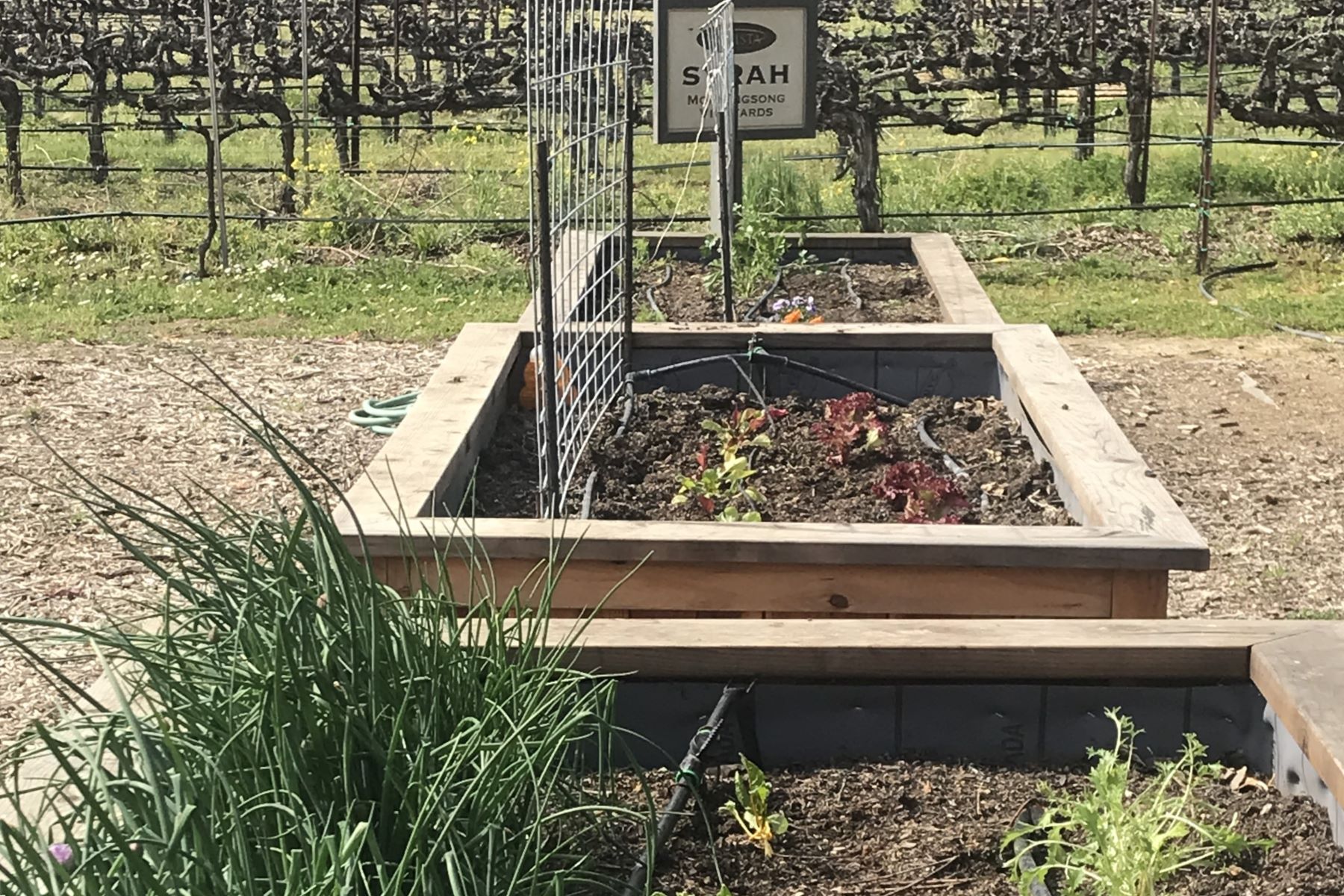
2022
Cherry Blossoms in Dry Creek Wine Country
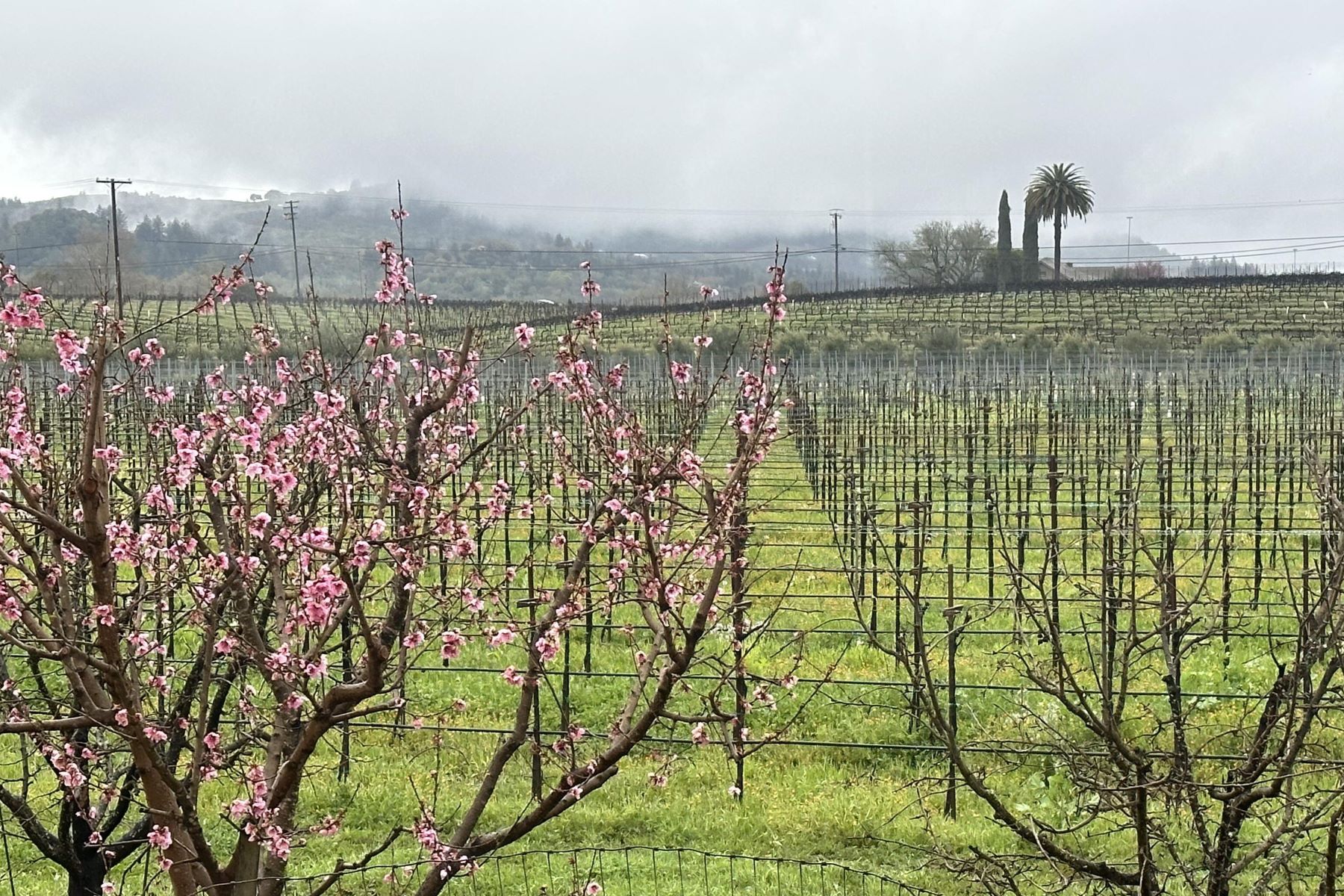
2023
After a Sparkling Spring Rain at Amista Vineyards
2024
Looking back at these moments from the past ten years, I’m reminded of how lucky I am to call this place home. The vineyard is never the same from one season—or even one day—to the next, and that’s part of its magic. As March unfolds once again, bringing fresh greens, golden mustard, and the promise of another growing season, I’m grateful for the beauty that surrounds me and for the many friends like Miriam who remind me to pause and take it all in. I hope these images bring a little of that magic to you as well.
What is a Sparkling GSM Blend?
A Rare and Unique Bubbly…
…Sparkling Tres from Amista Vineyards.
At Amista Vineyards, our love for Rhône varieties and sparkling wine led us to create Sparkling Tres—a unique take on the classic GSM blend. But what exactly is a GSM blend? Traditionally, it refers to a red wine made from Grenache, Syrah, and Mourvèdre, a combination that originated in France's Rhône Valley. Our sparkling version follows the same principles, using these three grapes and undergoing a second fermentation in the bottle to create elegant bubbles.
Did Amista Create the First Sparkling GSM Blend?
Perhaps! Sparkling GSM blends appear to be rare. A recent web search turned up only one—Amista Sparkling Tres. That discovery makes our wine all the more special, a true reflection of our pioneering spirit.
Amista Sparkling Tres
Winemaker Ashley Herzberg describes Sparkling Tres, a sparkling rosé, as bursting with fresh berry, bright cherry, and deep cranberry notes. While its vibrant fruit profile might suggest sweetness, it is a dry, refreshing wine that pairs beautifully with a wide range of foods. We didn’t set out to make a sparkling GSM blend. Instead, it evolved naturally, step by step, from our deep-rooted love for Rhône varieties—beginning with Syrah.
Que Será, Será
When we planted our first Syrah vines in 2000 in Dry Creek Valley, we didn’t have a master plan. Syrah was being hailed as the “next big thing,” and we were excited to be part of its rise. Little did we know that just a few years later, the movie Sideways would shift the spotlight to Pinot Noir, pushing Syrah into the background.
The Birth of 'Garage Syrah'
Despite the industry trends, my late husband and co-founder, Mike, saw the potential in our young Syrah vines. Traditionally, vineyards drop their fruit in the second year to help vines establish themselves. But Mike, eager to revive his passion for winemaking that began a decade earlier in our Silicon Valley home, had a different idea. In 2002, with the help of neighbors, family, and friends from Munich and Denver, he harvested three tons of Syrah and made our first wine in our garage—affectionately called "Garage Syrah."
The Launch of Amista
Garage Syrah was never intended for sale—it was simply a hobby and a way to share something personal with our friends. But every time they tasted it, they asked when they could buy a bottle. Their enthusiasm gave us the nudge we needed, and in 2004, Amista Vineyards was born.
Our Love for Rhônes Grows
That first Syrah set us on a path of discovery with Rhône wines. While Syrah didn’t become the superstar we expected, it became a cornerstone of our winemaking journey. We and our guests fell in love with its character, leading us to explore other Rhône varieties.
Expanding Our Rhône Collection
In 2011, we decided to grow our Rhône offerings. Instead of uprooting our established Syrah vines, we used T-budding, a grafting technique that allowed us to introduce new varieties without waiting years for new vines to mature. By the 2012 harvest, we had added Grenache and Mourvèdre to our vineyard, making two new red wines from these grapes.
The Debut of Tres and Our First Blend
With all three classic GSM grapes now in our vineyard, we created our first blend—Tres. This wine quickly became a favorite, especially for Mike. Winemaker Ashley, who joined us in 2011, encouraged us to blend rather than focus solely on single-varietal wines. Though hesitant at first, we embraced the idea, and Tres became a beloved addition to our lineup.
Sparkling Wines from Rhône Varieties
As we continued our Rhône adventure, we also expanded our sparkling wine collection. We introduced Sparkling Grenache and a sparkling Mourvèdre (called Mataró, the Catalan name for Mourvèdre). We also blended Grenache and Syrah with Chardonnay to create Fusión.
Why Sparkling Tres?
We first created Sparkling Tres in 2020, more than a decade after making our first sparkling wine. As with everything at Amista, we didn’t follow a market trend—we simply trusted our instincts. Given our love for Tres and the Rosé of Tres we introduced in 2018, making a sparkling version felt like a natural next step. Today, Sparkling Tres is one of our most sought-after wines, with fewer than 150 cases produced each year—a true testament to the joy of discovery and the spirit of Amista.
Still Thirsty?
If you want to learn more, here is a curated list of resources.
Mourvedre — A Guide to the Basics
What Do We Mean When We Say Rhône-style Wine?
Where to Taste Sparkling Wines near Healdsburg
Discover Amista’s Collection of Distinctive Sparkling Wines…
…and how they came to be.
Exploring Sonoma’s Sparkling Wines: Amista’s Unique Collection of Bubbles
Today, when you want to taste distinctive sparkling wines in Sonoma County, the place to go is Amista Vineyards, home to a collection of seven sparkling wines. All are crafted from certified organic grapes grown in our estate vineyards. But it wasn’t always so.
When we launched Amista, we never imagined we would be the first winery in Dry Creek Valley to make a sparkling wine. In fact, making sparkling wine was the furthest thing from our minds, despite my love for sipping bubbles.
Rhône-Inspired Sparkling Wines of Amista
Our journey began with a happy accident, followed by an unexpected opportunity that led to the creation of our first Sparkling Syrah in 2008. As we became more excited about experimenting with unusual grape varieties and blends, our lineup grew. Most sparkling wines are traditionally made from Chardonnay and Pinot Noir. At Amista, however, we craft sparkling wines from Rhône varieties—including Grenache, Syrah, Mourvèdre, and a GSM blend of all three—alongside two different Blanc de Blancs made from Chardonnay and a Chardonnay-based blend with a kiss of Grenache and Syrah.
Amista, Healdsburg’s Premier Grower Sparkling Wine House
Amista is now considered the premier “grower” sparkling wine house in Healdsburg. Like a grower Champagne house, we make our wines exclusively from grapes grown on our estate, allowing us to carefully oversee every stage of the growing process. From winter pruning to bud break, blossom, veraison, and finally harvest, we meticulously time our grape picking for sparkling wine at lower sugar levels to ensure balance and freshness.
Organic Sparkling Wines in Dry Creek Valley: A Taste of Amista’s Estate
A milestone in our sparkling wine journey is our commitment to organic farming. Our estate vineyards were certified organic by CCOF (California Certified Organic Farmers) in June 2024, making us the first sparkling producer in Sonoma County to craft exclusively from organically grown grapes. This means we use no synthetic fertilizers, pesticides, fungicides, or herbicides.
All our bubbles are packaged in clear glass bottles to showcase their stunning colors—from the golden hues of Blanc de Blancs to the blush pink of Grenache and the bright cranberry of Sparkling Syrah. While many sparkling wines are bottled in green glass to protect them from harsh store lighting, our wines go directly from our winery to you, ensuring they remain pristine. We recommend storing them in a dark, cool place until ready for chilling and enjoyment.
Amistara: Celebrating 20 Years of Innovation in Sparkling Wine
Our newest sparkling wine was created to celebrate our 20th anniversary in 2024. It’s a Blanc de Blanc made from our Chardonnay grapes, but with a twist. Winemaker Ashley incorporated a small percentage of still Chardonnay fermented in our concrete egg into the final dosage, along with a restrained addition of sugar syrup, resulting in a dry, refreshing bubbly. We named it Amistara, meaning "to become friends" or "to bring together" in Spanish—a fitting tribute to 20 years of making wine and friends.
Innovation has always been at the heart of our sparkling wine journey. Some innovations arose from serendipity—turning mistakes into opportunities. Others came from recognizing an unexpected chance to create something new. Still others were deliberate, like our decision to craft a Blanc de Blanc from our estate-grown Chardonnay. Over time, we expanded to include sparkling rosés from our Rhône varieties and, ultimately, a GSM rosé blend.
Today, we offer a sparkling wine to match each of our still wines. At our annual dinner in the vineyard last year, we paired each course with two wines—one still and one sparkling of the same variety—allowing guests to explore which pairing they preferred with each dish.
The spirit of innovation will continue to guide us forward, ensuring that Amista remains a destination for distinctive, estate-grown sparkling (and still Rhône-style) wines in Dry Creek Valley.
Still Thirsty?
If you want to learn more, here is a curated list of resources.
Amista’s Organic Certification
How Sparkling Wine Began at Amista - Serendipity
Sparkling Syrah A Journey Begins at Amista
From Rosé to Sparkling…
…and the lesson we learned from it.
Lessons That Will Shape Amista's Future: Seize the Opportunity
In my last post, I shared a lesson we’ve embraced at Amista that continues to guide us: being open to serendipity. Today, I want to share another story—the second step in our journey to making sparkling wine—and the lesson we learned from it.
From Rosé to Sparkling: A Journey Begins
Our first Rosé of Syrah was born out of a happy accident. At the time, we couldn’t have imagined that this unexpected success would eventually lead us to create our first sparkling wine.
Two years after that initial Rosé (we now make a half dozen) became a favorite, our winemaker, Chris, approached us with an intriguing proposal. He was teaching a class at the local junior college on the traditional method of making fine French Champagne. Chris asked if he could use some of the current vintage Rosé of Syrah for his students’ project. Naturally, we said yes, with one condition: we wanted to taste the finished product.
Sparkling Syrah: A Class Experiment
When we finally tasted the sparkling wine created by Chris and his students, we were amazed. It was delicious, vibrant, and utterly unique. We immediately knew we had to make more—not just for ourselves, but for our friends and community as well.
To make this dream a reality, we sent one barrel each of our 2007 and 2008 Rosé of Syrah to a custom crush winery that specialized in sparkling wines. This step was critical, as it’s where the second fermentation in the bottle—a hallmark of the traditional method—transforms still wine into sparkling wine.
In 2009, we debuted our first Sparkling Syrah at our Sparkling Holidays party. It was a momentous occasion, marked by Mike’s celebratory sabrage—opening the bottle with a saber—a tradition that continues to this day.
The Lesson: Seize the Opportunity
This experience taught us a simple but profound lesson: seize the opportunity. Making sparkling wine wasn’t on our radar when Chris approached us with his idea. Yet the class project revealed an unexpected opportunity, one we couldn’t ignore.
Yes, creating a sparkling wine is far more complicated and expensive than making a still wine. But thanks to Chris’s expertise and the emergence of a local winery specializing in sparkling production, we saw a way to make it work. Partnering with a custom crush operation made the process viable. And, of course, I love bubbles and couldn’t resist the idea of making our Rosé of Syrah sparkle!
Seizing opportunities has become a cornerstone of our journey toward becoming a sparkling winery. I’ll admit, Mike was naturally better at this than I was. He had a knack for jumping in with both feet, while I preferred to research and deliberate before making a move. But whenever I’ve allowed myself to take the leap, it’s always been worthwhile.
Embracing the Future
As we continue to grow and evolve, the lesson of seizing opportunities remains at the heart of what we do. It’s a reminder to embrace the unexpected and pursue the possibilities that spark joy and excitement. Who knows what opportunities will come next? One thing is certain: we’ll be ready to seize them.
Still Thirsty?
Enjoy a bottle of Sparkling Syrah, or...
If you want to learn more, here is a curated list of resources.
How to Properly Saber Champagne
How Sparkling Wine Began at Amista
Serendipity: A Lesson Learned…
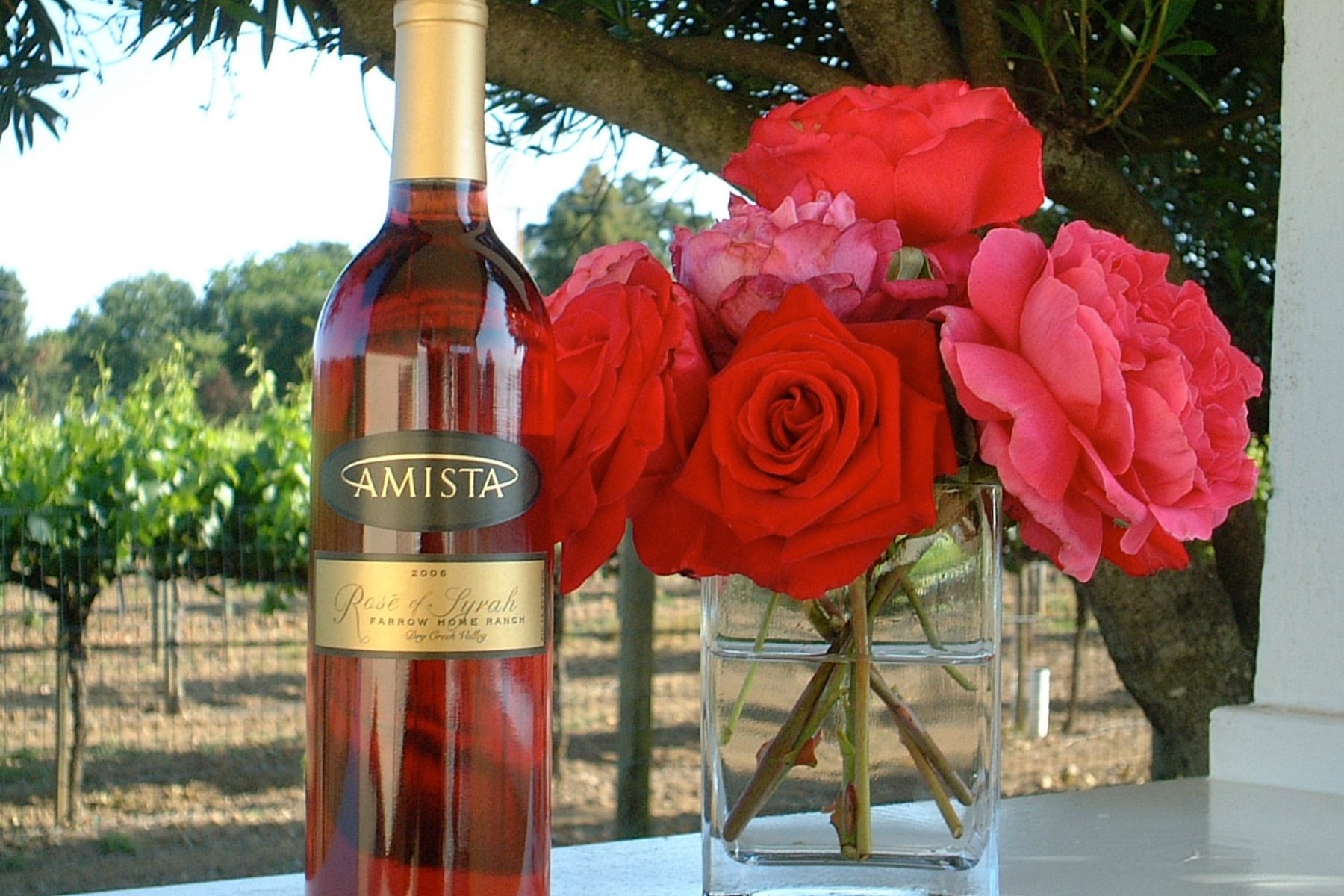
…to help guide our third decade
As we begin not only a new year but step across the threshold into our third decade, it is the perfect time to review our vision for Amista and how it will play out in the future. Most people know that my late husband and co-founder, Mike, and I created Amista largely through a series of unplanned opportunities and happy accidents.
What most people don’t know is that we crafted a vision for Amista at its very beginning. We reviewed it every few years to examine its relevance. We have made refinements along the way, although it has remained fundamentally the same. I am gratified that it has stood the test of time.
The centerpiece of our vision is what I call our core purpose. It is essentially the promise we make to our customers. Here is ours:
Amista Vineyards crafts distinctive wines and exceptional experiences – to make your everyday moments special and your special moments extraordinary.
The last two decades have been an exhilarating journey of opportunities, setbacks, surprises, and a lot of lessons learned. What I know from my previous work in leadership is that often the most growth and learning comes from two key types of experience: tackling things you are doing for the first time and dealing with adversity.
There have been plenty of firsts – from making our first wine, running a small business, building a winery, making sparkling wines, going solar, to achieving organic certification. And there has also been adversity in various shapes and sizes such as the two-year delay in getting a permit to build our winery, the theft of half of our Mourvèdre grapes one night during harvest, an extra seven tons of grapes picked and crushed that weren’t in the plan, evacuations for fires, and COVID shutdowns.
Both the firsts and the crises seemed daunting at the time. But they also generated energy that propelled creative solutions and decisive action. At those times, the importance of having a commitment to a clear purpose was vital. That and a good dose of humor! Once the first was accomplished or the crisis was dealt with, the final gift was the gift of learning. There is only so much you can learn from a book, a class, or from another person. The deepest learning comes from experience.
Becoming Healdsburg’s Sparkling Wine House
Becoming the first sparkling winery in Healdsburg wasn’t part of our plan. Today, Amista is known as the sparkling wine house in Dry Creek Valley, offering a half dozen different sparkling wines, a sparkling wine club and a sparkling wine tasting flight. The spark that eventually led us to making our first sparkling wine was a happy accident—one that also provided an important lesson that will continue to guide us in the future.
Be Open to Serendipity
Embracing serendipity means recognizing that accidents and unexpected happenings present opportunities. Here is one example that led to the creation of a new wine and, eventually, our sparkling wine program.
In September 2005, we decided to try harvesting our Syrah by machine. Mike was in the vineyard at night (machine harvesting is typically done at night when it’s cool) supervising the pick. He was enthralled watching the machine go up and down the rows and got so excited that he kept asking the operator to pick more rows. He didn’t want to stop.
The next morning, he was still reveling over his midnight pick when he got a call from someone at the winery. They told him he had 10 tons of Syrah grapes in a 10-ton fermentation tank, and when the wine started fermenting, it was going to bubble over, go all over the floor, and he was going to have to clean it up.
He swiftly moved into action and had 200 gallons moved from the tank to neutral barrels. Neutral barrels have been used in prior years and impart no oak to the wine. His idea was that once the Syrah in the tank was fermented and moved to barrels, he would combine it with the juice he had removed.
In early January of 2006, we went down to the winery with our winemaker, Chris Wills, to taste all the wine in barrels. We decided to taste the wine that had been removed to avoid the spillover. It had spent very little time on the skins, so it was a rosé rather than a red wine. We tasted it. It was fantastic. We decided on the spot to keep it separate from the other Syrah and bottle it as our first Rosé of Syrah. This was step number one in the serendipity that would lead to our first sparkling wine.
As we move into Amista’s third decade, I’m inspired by the lessons of the past to embrace the opportunities ahead. This year, we’ll focus on how our vision continues to evolve and share more stories about the moments that shape us. Here’s to serendipity and the journey ahead!
Amista Vineyards - 5 Magical Memories
Celebrating 20 Years…

…of adventure, friendship and joy.
As we celebrate our 20th anniversary, I'm excited to share a series of short weekly posts that take you behind the scenes, revealing memorable moments that have shaped our journey at Amista Vineyards.
As we wrap up our 20th anniversary celebration at Amista, I find myself reflecting on the incredible memories we’ve made along the way. Some moments shine brightly the instant they happen, while others reveal their magic only with time. It was no easy task to choose just a few highlights from the 20-year journey my late husband Mike and I shared. But here are five cherished memories that capture the heart, joy and fulfillment of our adventure in wine.
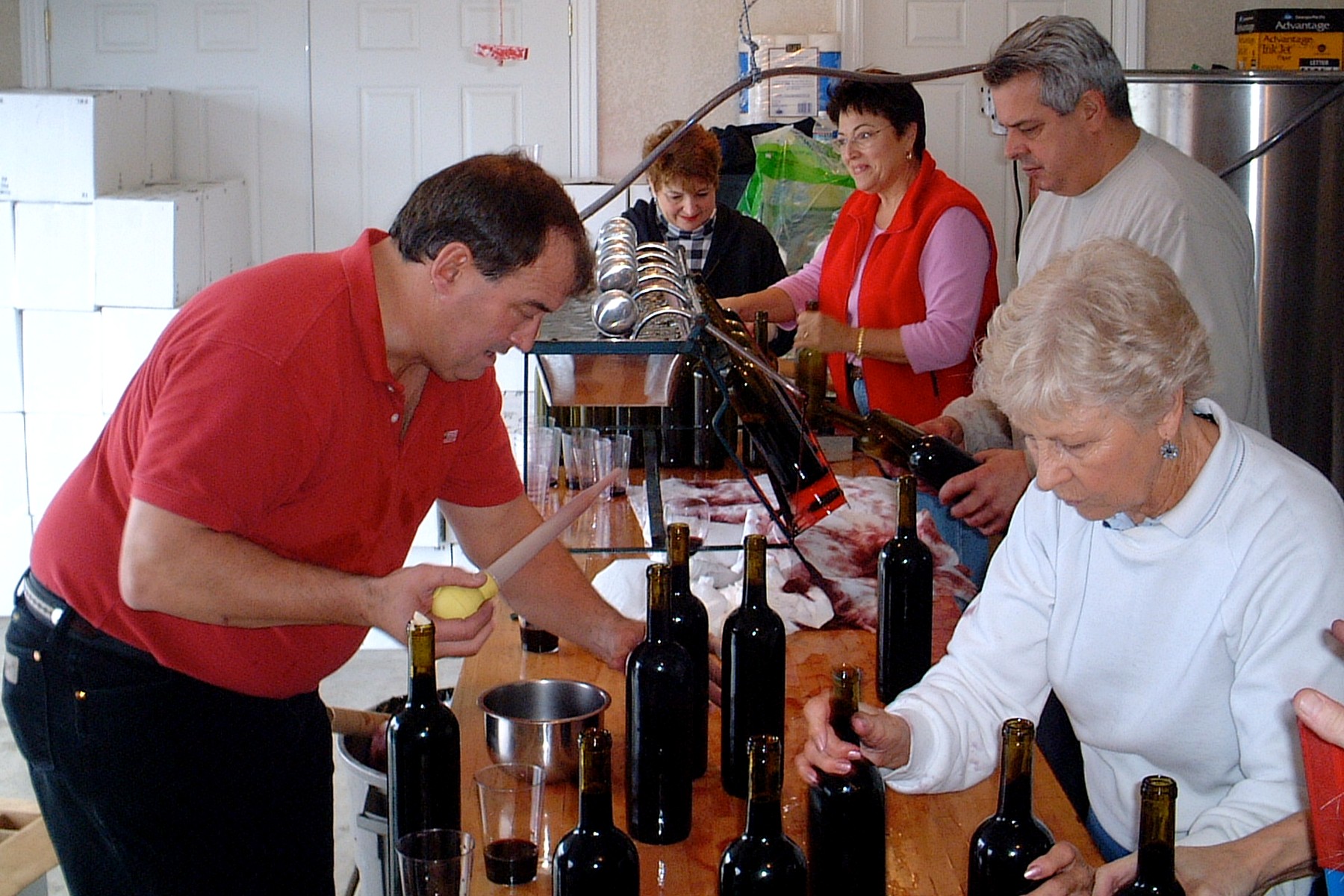
1. The Joy of Our First Garage Syrah Bottling Party
One of the most unforgettable moments happened in December 2003, when we bottled our "Garage Syrah." Mike had harvested three tons of Syrah grapes the year before, and by the time bottling rolled around, we needed help. So, we turned it into a party, inviting a dozen friends and family members—many of whom had already invested in futures of our first official Amista Syrah.
That day wasn’t just about bottling wine; it was about community. Together, we bottled 100 cases in record time, laughing and forging new friendships in the process. That evening, we gathered around a candlelit table for a dinner Mike and I prepared, to relive the day’s best moments. The warmth, laughter, and shared sense of accomplishment linger to this day, a beautiful reminder of how our journey began—with friends, family and the magic of wine.
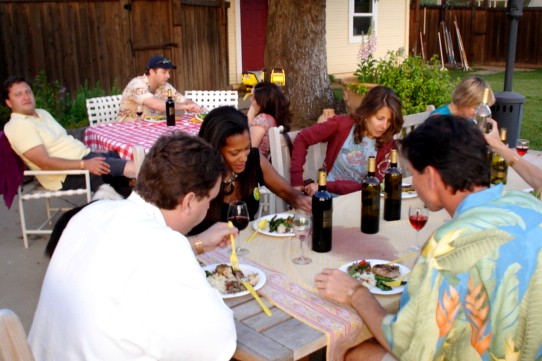
2. Barbecue Bonds that Became Lifelong Friendships
In 2006, our winery was not yet built, but we had plenty of wine to sell. We decided to host a happy hour for guests who had joined us for a vineyard tour the year before during Passport, Dry Creek Valley’s signature wine event. Among them was Jack, who brought a few friends. Their enthusiasm was infectious, and soon more of their group arrived, turning the evening into a full-blown party.
Jack’s crew had a tradition of hosting an upscale barbecue during Passport weekend, but that year they lacked a location. Hearing this, Mike didn’t hesitate. “Bring the food,” he said. “You can cook here.” The next night, coolers in tow, Jack and his friends arrived. They filled our kitchen with laughter and incredible aromas—grilled red curry coconut chicken, asparagus, and crusty French bread.
As the group of 20 gathered around our table, it felt like a reunion of old friends. Their stories, laughter, and love for life filled the evening. They cleaned up after dinner and left with plenty of wine, ensuring our first Passport sales were a hit. This tradition continues to this day, creating a bond that spans generations. Jack’s family, friends, and now even their children have become part of our Amista family.
3. Diner Amista – A Passport Celebration to Remember
Passport weekends are a highlight at Amista, with each year bringing a new theme. One of the most memorable was when we celebrated the classic American diner—with a twist. Picture truffled mac and cheese, black-and-white checkered decor, and jukebox tunes filling the air.
Our staff donned retro diner attire, and even our dogs wore paper hats. The winery transformed into a lively, nostalgic space where guests sipped wine, enjoyed comfort food, and danced the jitterbug. My mom stole the show on the dance floor, embodying the spirit of the day. This event was a beautiful reminder that joy comes not just from great wine but from the teamwork and shared experiences that bring us together.
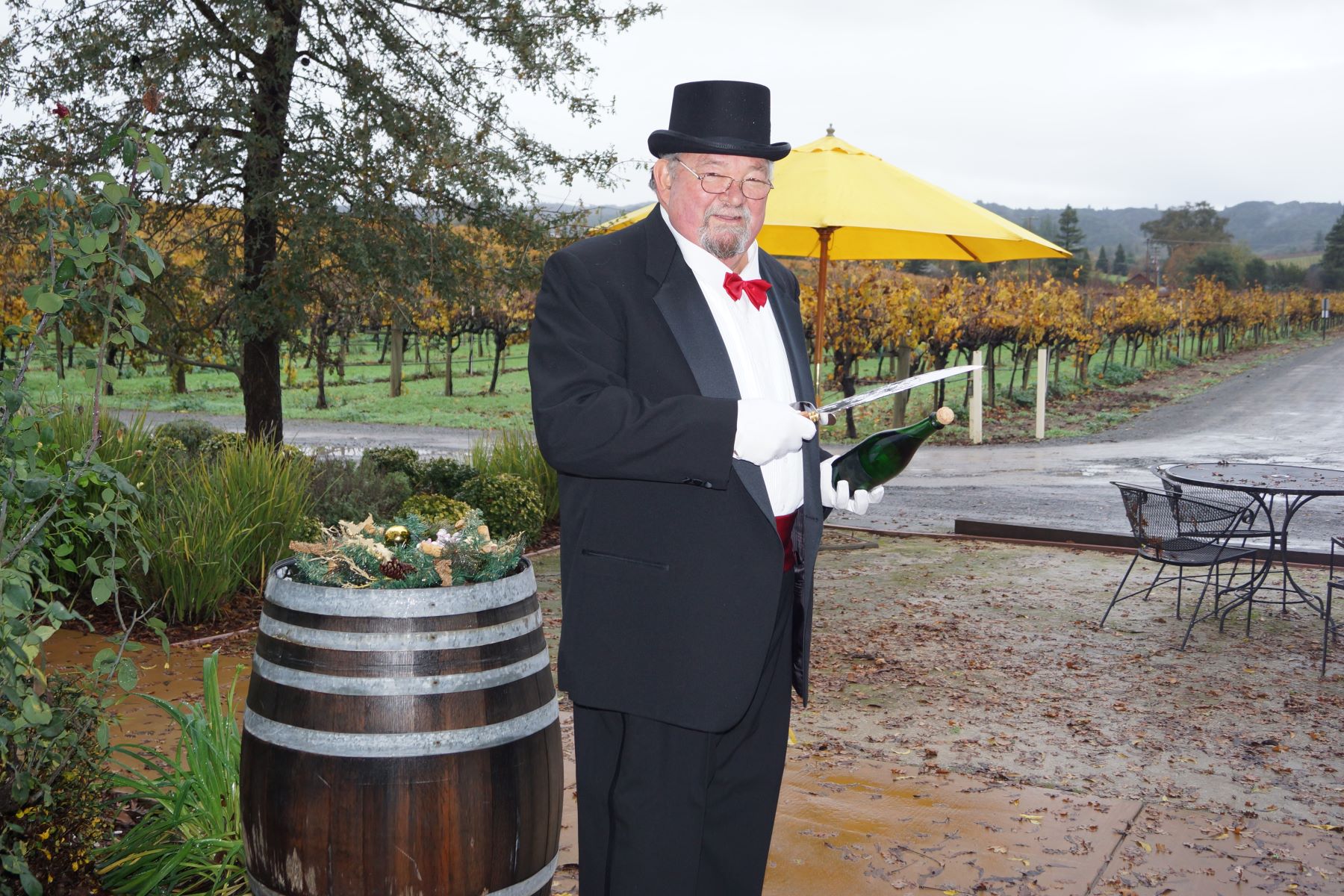
4. Sabrage and Sparkling Beginnings
Our annual Sparkling Soiree is a cherished tradition, but one evening stands out as a turning point. It marked the debut of our first Blanc de Blanc — the first sparkling wine crafted by our winemaker Ashley Herzberg—and truly launched our sparkling wine program. What began with two sparkling wines that evening has since grown into a collection of seven.
That night was also memorable for another reason: it was the first time Mike donned his iconic tux, top hat, and red bow tie. As he performed the sabrage ceremony, his signature look became inseparable from the celebratory spirit of Amista. The Blanc de Blanc went on to win gold at the “Best of the Best” North Coast Wine Challenge, but the true prize was the joy of that evening, which marked the start of a sparkling journey that continues to thrive and expand.
5. Wine Cruising on the Danube – A Journey of Connection
In 2017, we co-hosted a wine cruise along the Danube with fellow Dry Creek Valley wineries. The first evening, as we sailed past Budapest’s glittering lights, the air was filled with wonder. The next night, we hosted an Amista wine dinner, presenting our wines alongside exquisite dishes.
Sitting at the head table with Ashley, my parents, and dear friends, I watched Mike beam with pride. Guests approached him afterward, eager to hear the story of how we turned a dream into reality. In that moment, I realized the magic of Amista wasn’t just in the wine—it was in the connections we made and the community we built.
As I reflect on these memories, I am reminded that Amista has always been more than a vineyard. It’s a place of friendship, joy, and the belief that life is meant to be celebrated. Here’s to 20 years of magic—and many more to come.
As we ring in the new year, we raise a glass of Tres Rhône Blend in memory of Mike, Co-Founder and Winemaker Emeritus, whose spirit will always remain a part of Amista. Cheers to you, Mike!
Still Thirsty?
If you want to learn more, here is a curated resource.
How to Properly Saber Champagne
The Magic of Sabrage
7 Magical Moments…

…in celebration of friendship and tradition.
As we celebrate our 20th anniversary, I'm excited to share a series of short weekly posts that take you behind the scenes, revealing memorable moments that have shaped our journey at Amista Vineyards.
Sabering is the art of opening a bottle of Champagne or sparkling wine with a saber, transforming an ordinary moment into something extraordinary. At Amista, this grand tradition has become the heart of our annual Sparkling Soiree, held on the first Saturday of December. It all began in 2011, thanks to my late husband Mike, the visionary behind Amista and our first winemaker. Each year since, we’ve carried on this joyful ritual, celebrating not only wine but friendship and cherished memories.
Mike's First Sabrage
Our holiday parties began in 2007 when we first opened the tasting room, but over time, the gathering evolved into something more elegant and festive. In 2011, Mike was eager to add a new flair to the evening by performing a sabrage. That night, with a grin and a t-shirt perfectly matched to our Sparkling Syrah, Mike prepared to open the first bottle with style, setting the stage for a tradition we would treasure.
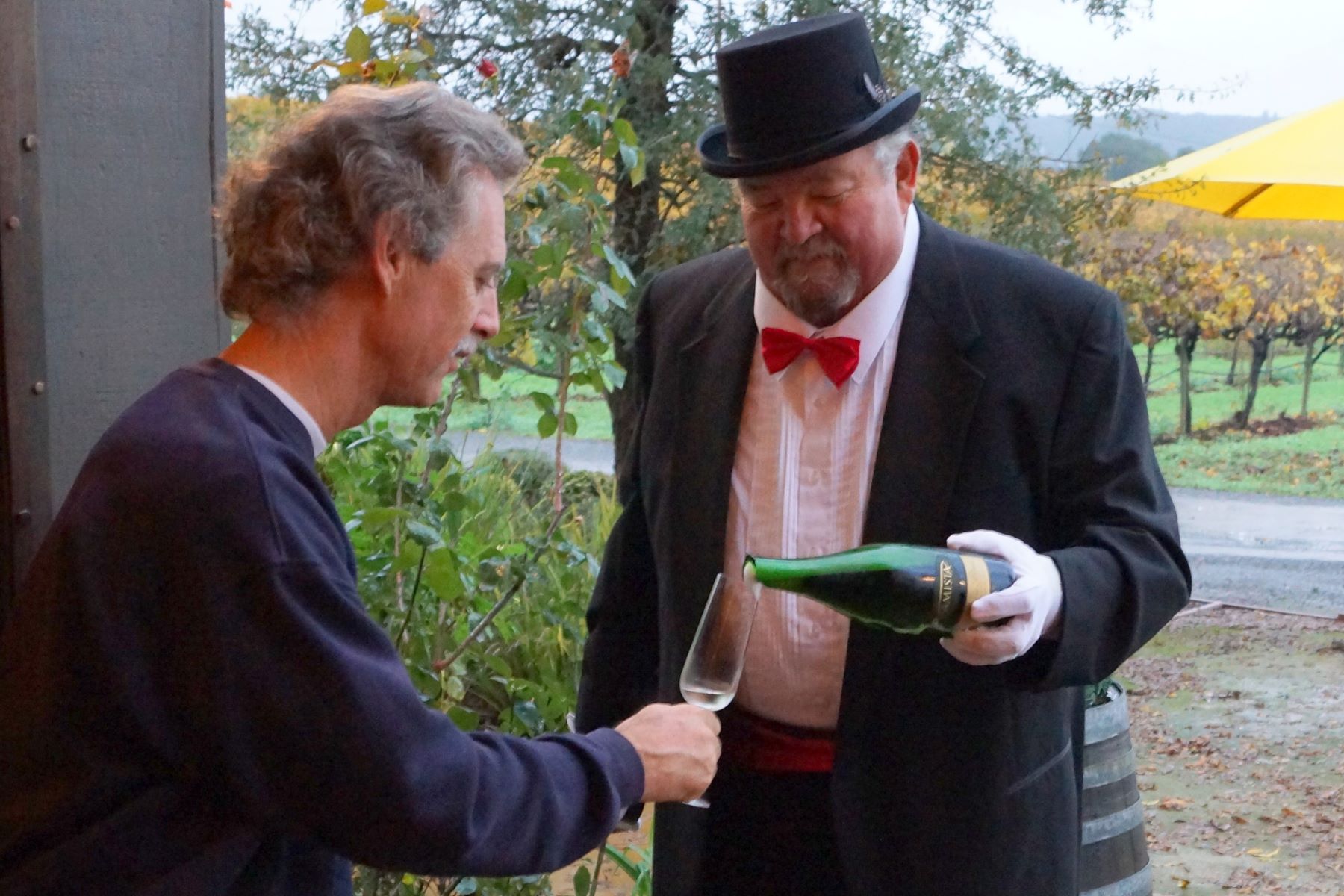
Top Hat, Tux, and Timeless Style
The following year, Mike elevated the sabrage experience by dressing to impress – tuxedo, top hat, red cummerbund, and bow tie. His new look quickly became iconic, and the sabrage became more than just a party trick. He poured the first glasses from the newly opened bottle, his joy evident in every pour. That image of Mike sharing his wines with love and pride is a treasured memory.
Night Under the Full Moon
In 2014, the sabrage took on an almost magical quality. The full moon hung low, shrouded by delicate wisps of cloud, creating a breathtaking backdrop. As Mike raised the saber and popped the cork, the moonlight cast a glow over the festivities. Guests eagerly anticipated the moment each year, cheering Mike on – even when it took a few tries to get the cork flying. His infectious joy made each attempt more delightful than the last, turning the Sparkling Soiree into an unforgettable celebration
Passing the Saber
In 2015, Mike once again donned his tux and top hat, ready for the ceremony. But just as the moment arrived, he handed the saber to our winemaker, Ashley. She was taken by surprise, but in true Ashley fashion, she embraced the challenge. With Mike’s top hat atop her head, she sabered the bottle effortlessly on her first try, marking the start of a new chapter in the tradition.
A Sabrage to Remember (or forget!)
The following year, I decided to try my hand at sabrage. I was nervous, following in the footsteps of Mike and Ashley, who always made it look easy. Whether it was bad luck, a faulty bottle, or simply my nerves, the bottle didn’t pop as expected – it shattered in my hand. In the excitement, I hadn’t noticed the cut on my finger until a guest pointed it out. Fortunately, three surgeons happened to be in attendance and quickly patched me up. I happily passed the saber back to Ashley from that day on!
Joy in a Bottle
Our Sparkling Syrah has always been more than just a wine; it’s a symbol of celebration. We fondly call it "joy in a bottle" – its vibrant color and crisp, dry flavor make it Ashley's favorite wine to saber. No matter what she is doing, Ashley brings a joyful spirit, and her enthusiasm makes the sabrage even more special.
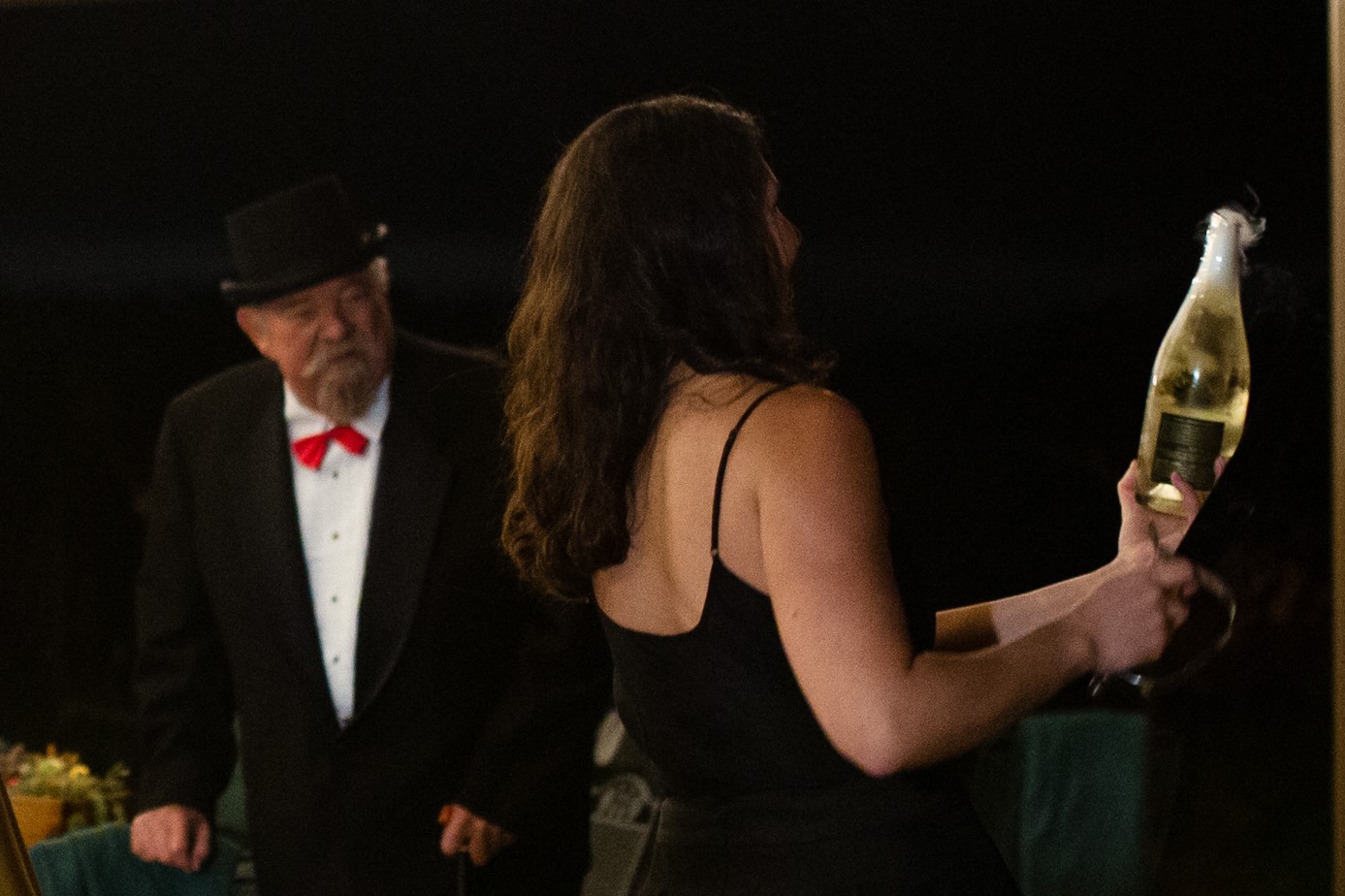
Carrying on the Tradition
The 2021 sparkling sabrage ceremony was the last Mike witnessed. Dressed in his signature tux and top hat, he stood proudly as Ashley performed the sabrage. I know he felt immense gratitude—for the partnership we shared, for Ashley’s talent and friendship, and for the community we built together.
To Mike – thank you for your vision, your love, and the traditions that continue to bring us together in friendship. Cheers to you, always.
Still Thirsty?
If you want to learn more, here is a curated resource.
How to Properly Saber Champagne
